Knowledge on growing various flowers (Summer flowers 2)
Summer Flowers
Origin: Tropical and subtropical regions of America, also distributed in East Africa and the East Indies
Type: Flowering plant
Flowering period: Spring and summer are the best.
Sunlight: Prefers bright light in semi-shade, highly adaptable to sunlight, avoids direct sunlight in summer, but requires sufficient light in autumn.
Temperature: The optimum growth temperature is 18-26℃.
Soil: Prefers loose, fertile, well-drained sandy loam.
Water: Prefers moisture.
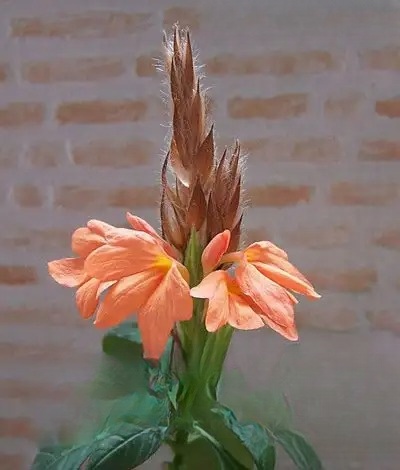
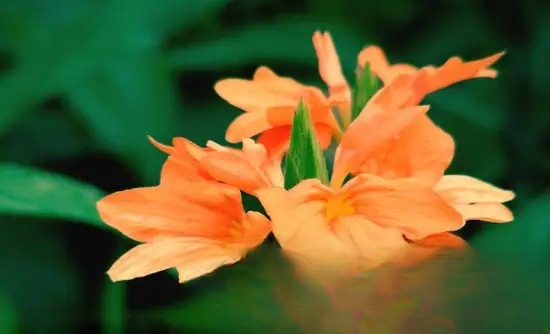
Tips for growing flowers:
The potting soil can be 2 parts garden soil, 3 parts leaf humus, add a small amount of bone meal or superphosphate powder as base fertilizer, mix thoroughly before use. Microporous inorganic mineral matrix can also be used for soilless cultivation, and pollution-free cultivation nutrient solution should be regularly applied every week or half a month. With the assistance of appropriate light or artificial light (3000-5000 lux), it can bloom.
During the period of vigorous growth, apply thin liquid fertilizer or a small amount of granular compound fertilizer once every half a month, and apply it to the potting soil after loosening the soil. Apply phosphorus and potassium fertilizers 1-2 times before flowering to make the flowers larger and more colorful.
In spring, the plant should be watered fully when new branches grow. In summer, in addition to ensuring sufficient water and light, the environment should be kept moist, and water should be sprinkled on the ground frequently or the flower pot should be placed on a basin of water with pebbles. In autumn, watering should be moderate, keeping the potting soil moist, and watering should be done only when the potting soil is half dry. In winter, the temperature is low and the plant is in a semi-dormant state. At this time, watering should be controlled to keep the potting soil from completely drying out.
The cross acanthus is not cold-resistant, and the wintering temperature should not be lower than 10℃.
After the flowers fade, you can cut back 2/3 of all the stems and branches to make them neat and beautiful.
Origin: Southern Africa
Type: Flowering plant
Flowering period: June-July.
Sunlight: Prefers sufficient sunlight. Insufficient sunlight will cause the leaves to become soft, the buds to decrease, the flowers to become smaller, and the color to become lighter.
Temperature: Prefers warmth, is resistant to high temperatures, and is not cold-resistant. The optimum growth temperature is 18-25℃. It is adaptable to high temperatures above 30℃, but the leaves grow slowly and the flowering is reduced. The temperature in winter cannot be lower than 5℃.
Soil: Suitable for loose, fertile and well-drained soil.
Water: Sensitive to water. If the soil is too wet for a long time, it is prone to waterlogging and death. High temperature and humidity in summer are not conducive to growth and development, and it is easy to get sick.
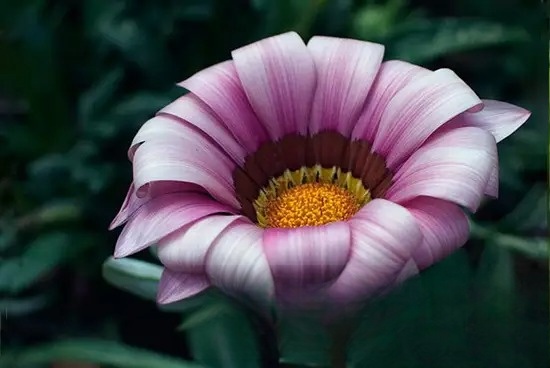
Potted plants are usually planted in 12-15 cm pots, and the potting soil can be a mixture of leaf mold, manure soil and coarse sand in equal amounts. Seedlings can be potted when they grow to 4-5 leaves.
Fertilize once every half a month or so, using Huiyou 15-15-30 potted flower fertilizer or decomposed cake fertilizer water.
Keep the soil moderately moist during growing season.
With sufficient light and suitable temperature conditions, it can bloom continuously. If you don't keep seeds, cutting off the remaining flowers in time after the flowers fade will help form more buds and bloom more.
Origin: Europe and Asia, also distributed in North America
Type: ornamental plant
Flowering period: May-June.
Sunlight: Likes sunshine and requires a well-ventilated environment.
Temperature: Likes warmth and avoids heat.
Soil: Avoids barrenness, suitable for planting in fertile, loose, well-drained sandy loam.
Water: Likes moisture.
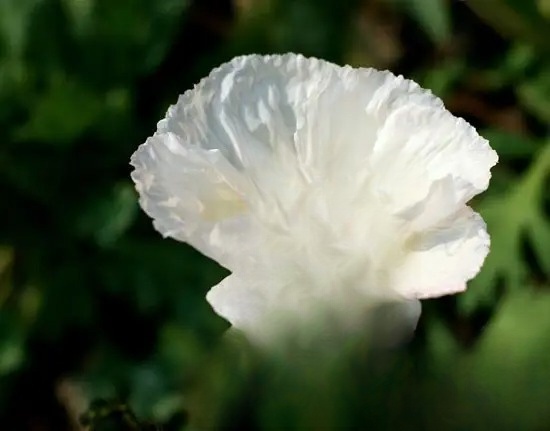
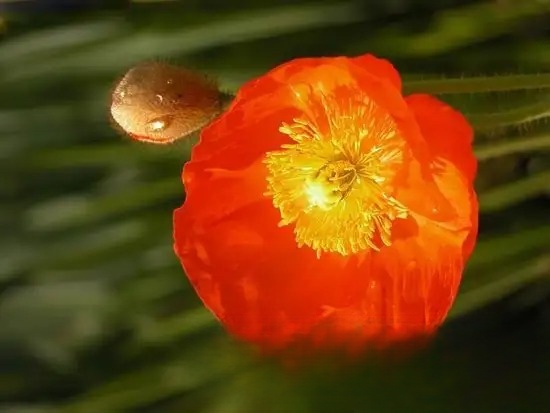
Tips for growing flowers:
The root system of poppy is straight and slender, and the seedlings are not resistant to transplantation, so it is better to sow directly at the planting site. You can also sow in small pots or sow the seeds in special nutrient pots. After the seedlings emerge, you can select 1-2 strong seedlings in each pot and move the pots to the sunny bed to overwinter. In the spring of the following year, you can plant them upside down at the planned planting site. When the seedlings grow 3-4 true leaves, transplant them with the roots and soil.
For ground planting, apply thin fertilizer twice before wintering, and apply liquid fertilizer once before flowering. It is best to apply topdressing once before flowering to promote large and colorful flowers and strong opening.
Under normal circumstances, ground planting does not need to be watered frequently. Potted plants should be watered once every 3-5 days depending on the weather and pot soil conditions. About 60% of the maximum water holding capacity of field soil is good for the development of poppies. Water less during winter and water more during spring growth.
After transplanting, maintain the temperature at around 20℃ and the seeds will sprout in 7-10 days.
If the remaining flowers are cut off in time when they fade, they will not bear fruit. This will concentrate nutrients and allow the flowers that bloom later to thrive, thereby extending the flowering period.
Poppy is propagated by sowing, usually cultivated as a biennial. Poppy and plants of the same genus are taproots, with few fibrous roots, and are extremely intolerant of transplantation, so they should be propagated by direct seeding. If they are needed for gardening, it is best to use nutrient pots or small paper pots to grow seedlings, and transplant them with the pots or pots, otherwise it will be difficult to survive or grow poorly. The sowing period is determined according to climatic characteristics. The Northeast is relatively cold, so direct seeding can be done in the spring after the soil thaws; in North China, direct seeding is mostly done during the "light snow" in early winter to encourage it to sprout as early as possible in spring. The seeds are small, so the sowing should be fine, and row sowing should be used with a row spacing of 25-30 cm. In severe winter, the surface of the ridges should be covered with hay to prevent cold. The suitable temperature for seed germination is 20℃. Families can sow directly in pots.
Although the poppy does not contain alkaloids such as morphine, the whole plant can be used as medicine. The cut flowers and boiled in water can be used as a cough syrup, which has an antitussive effect; the juice in the body has analgesic and antidiarrheal effects.
Origin: Eastern Asia
Type: Flowering plant
Flowering period: June-August.
Sunlight: Likes strong light and well-ventilated environment.
Temperature: Cold-resistant, but avoid freezing.
Soil: Likes fertilizer, grows well in humus-rich, relatively sticky soil.
Water: Likes water and humidity.
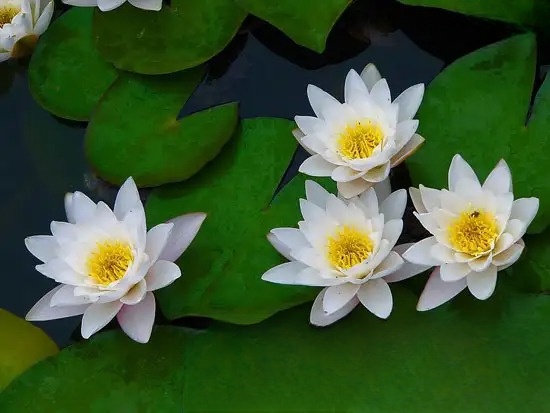
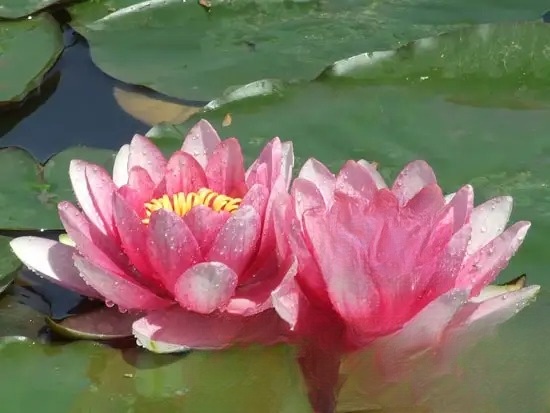
Water lilies can be planted in ponds, which are more suitable for potted plants (tanks) for viewing. For potted plants, you can choose a pot or water tank with an inner diameter of 40 cm and a depth of about 60 cm, and plant it from the end of March to the beginning of April. When planting, first put 3-4 cm thick river mud at the bottom of the pot (tank), and then put about half a pound of broken hair, broken bones, chicken and duck feathers, fish bones, plant ash and other fertilizers containing phosphorus and potassium as base fertilizers, and finally fill in fertile river mud to 2/3 of the pot height, leaving 25 cm of water injection space on top. Then bury the cut rhizomes (cut into 6-8 cm segments with two buds) with the top bud facing up under the soil surface. The depth of the soil covering is preferably when the top bud is level with the soil surface, 5-7 segments per pot. After planting, inject 2-3 cm deep shallow water to increase the water temperature. If the water is too deep at this time, it will affect germination. In the future, the water level will be gradually deepened depending on the growth of the plant. Place it in a well-ventilated and sunny place for maintenance.
During the growth and development period, top dressing can be applied 2-3 times depending on the growth of the plant.
In summer, the water depth is about 25 cm, and this depth is often maintained. In hot seasons, pay attention to keeping the basin water clean. When the basin water is dirty, the dirt should be removed in time and replaced with new water.
Water lilies are positive plants. If there is insufficient light during the development period, the stems and leaves will be lush, but there will be few flowers, or even only leaves without flowers. If they are placed in a shaded and unventilated place for a long time, moss will easily grow on the water surface, causing the plant to grow weak, and only leaves will grow without flowers. Pour out the water in the pot around the Cold Dew Festival and place it in a cold room at about 3℃ to overwinter, keeping the pot soil moist and not frozen. Divide the plant in the spring of the following year to avoid crowding of roots and stems in the pot, poor development, and thus affecting flowering.
During the growth and development process, water lilies are easily harmed by aphids and water borers.
(1) Aphids: If the water lily is not exposed to enough light and has poor ventilation during its growth and development period, it will not only grow weak but also be vulnerable to aphids. When the pests are found, they can be sprayed with a 1200-fold aqueous solution of dichlorvos , or killed with tobacco leaf water (50 grams of tobacco leaves plus 5 liters of water, boiled).
(2) Water moth: Also known as cotton water moth, the larvae damage water lily leaves, bite the leaves into two pieces of the same size, and then spin silk to overlap the leaves to make a protective sheath in which to live. With the protection of the leaves, it can float freely on the water. After the protective sheath dries up, it will build a new sheath. The larvae are mostly active and feed at night. In August and September, the larvae mature and often close the two leaves, then spin silk to form a white oval cocoon pupa.
Prevention and control methods: ① Use nets to catch the larvae floating on the water surface in time; ② During the larval stage, spray with 1000 times diluted 50% cypermethrin to kill them.
Removing dead flowers and leaves after flowering can maintain the beauty of the plant.
Water lilies are usually propagated by division or sowing.
(1) Division method: In April, remove the rhizomes from the soil, select the stems with new buds, cut them into 10-15 cm long sections, and plant them separately.
Origin: Mexico
Type: foliage plant
Flowering period: July-August.
Sunlight: likes sufficient sunlight, but avoids strong direct sunlight in summer, and has a certain shade tolerance. Cultivated in a sunny place, it grows strong, with dense stems and leaves and bright leaf color.
Temperature: likes warmth.
Soil: grows well in fertile and loose soil.
Water: adapted to humid climate, not very cold-resistant, wintering temperature cannot be lower than 10℃, but if it is in the shade for a long time, it will often cause the stems and leaves to grow too long and the leaf color to fade.
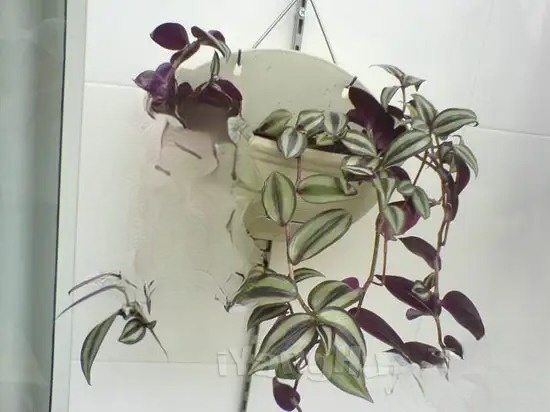
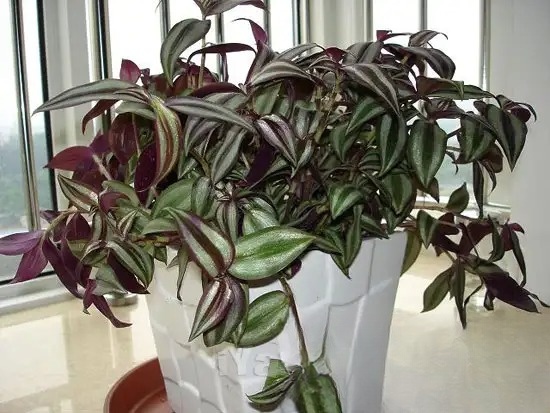
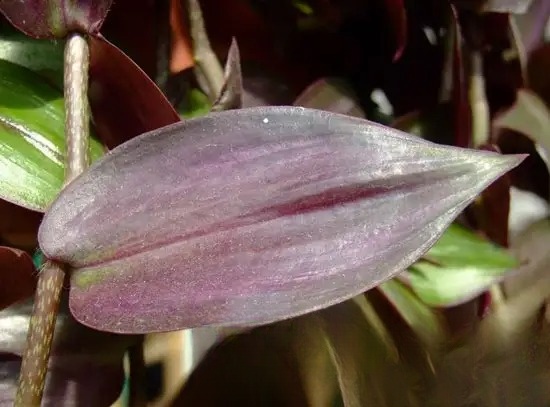
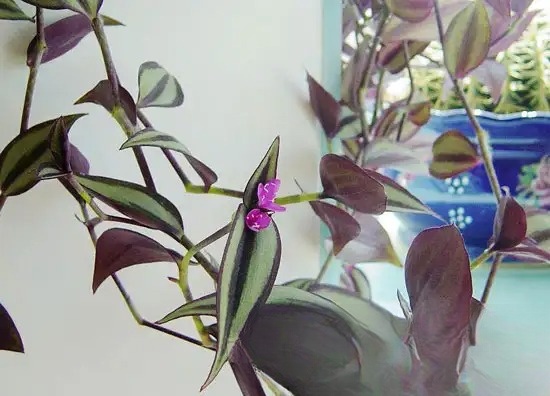
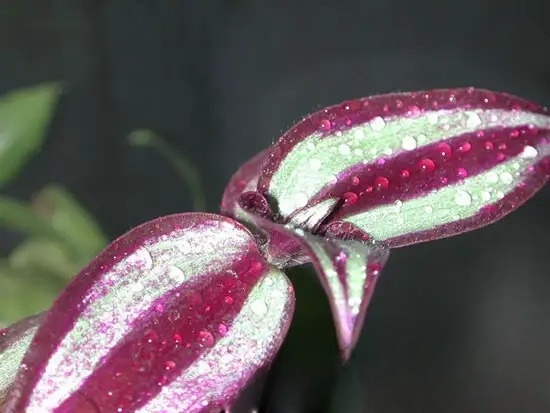
Tips for growing flowers:
The potting soil should be a mixture of 1/3 leaf mold, garden soil and river sand.
Apply thin liquid fertilizer once every half a month or so, but be careful not to apply too much fertilizer. If too much nitrogen fertilizer is applied, the leaves will fade.
During the growing season, the soil in the pot should be kept moist, and water should be sprayed on the stems and leaves frequently to maintain a high air humidity to prevent the leaf tips from drying out and burning.
Hanging bamboo plum likes a semi-shady environment. In spring and autumn, it should be placed in a bright scattered light place indoors. In summer, it should be placed in a well-ventilated place indoors to avoid exposure to the sun. In winter, the room temperature should be kept above 10℃, and the amount of watering should be appropriately reduced. If you water too much at this time, the pot soil will be damp for a long time, which will easily cause root rot and yellow leaves. In winter, it should be placed on a south-facing windowsill so that it can see more sunlight.
To make the plant fuller, the newly planted seedlings should be topped when the stem grows to about 20 cm to promote branching, otherwise the branches will grow thin and long, affecting the ornamental effect. Plants that have been cultivated for too long often have yellowing or falling leaves at the base, affecting the ornamental effect. At this time, the overlong branches and leaves should be cut off to promote the germination of new buds at the base and the growth of new branches. The cut parts can be used for cutting propagation.
The propagation of the hanging bamboo plum is mostly by cuttings and divisions, which can be carried out throughout the year. Cuttings can be combined with pinching, cutting strong branches as cuttings, inserting them into plain sand, placing them in a semi-shaded place, keeping them moist, and they are very easy to root. The stems of the hanging bamboo plum creep on the ground, and after the nodes take root, they can be separated and planted to form new plants.
Hanging bamboo plum has a good ability to remove pollution. A pot of hanging bamboo plum can absorb the formaldehyde gas emitted by the ceiling, floor, furniture, etc. within 6 hours.
In addition, hanging bamboo plum can be used as medicine, and has the effects of clearing heat and detoxifying, cooling blood and promoting diuresis.
Origin: China
Type: Flowering Plant
Flowering Period: Flowering Period May-July, Fruiting Period August-October
Sunlight: Strong adaptability, likes sunshine and tolerates shade.
Temperature: Strong cold resistance.
Soil: Not strict on soil, but grows better on fertile, moist sandy loam.
Water: Tolerant to early and waterlogging.
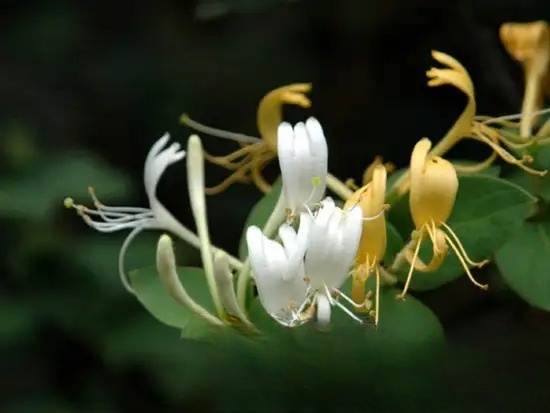

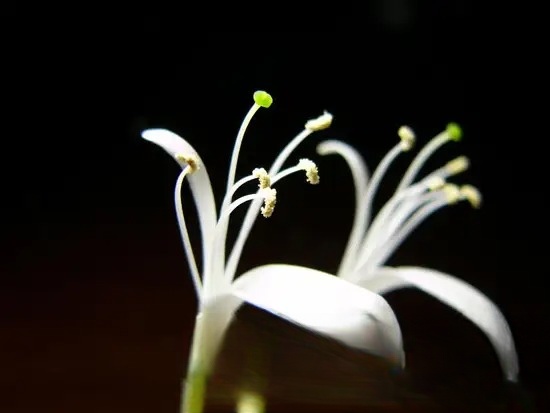
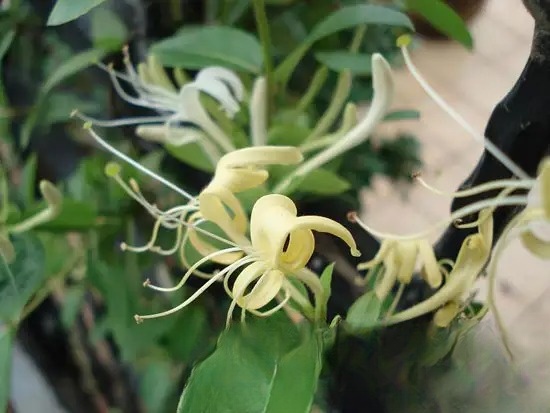
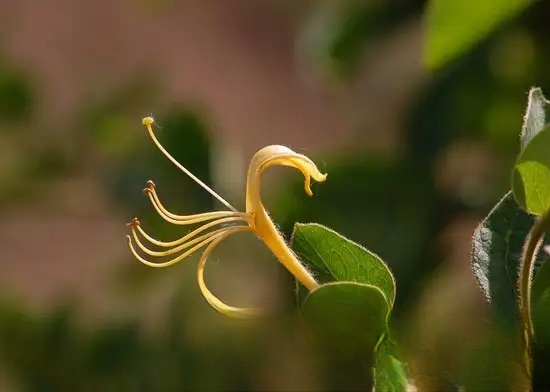
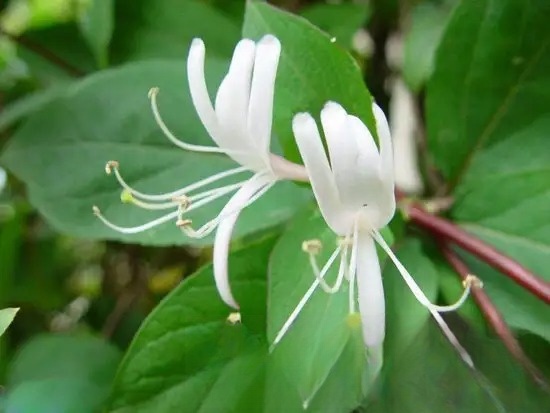
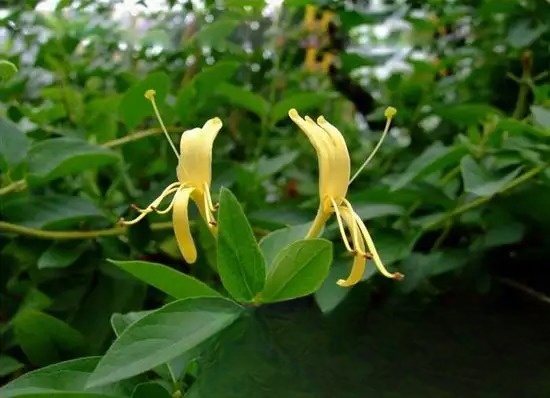
Tips for growing flowers:
Plant it in a culture soil mixed with 6 parts peat, 3 parts vermiculite and 1 part perlite.
When repotting in spring, apply an appropriate amount of cake fertilizer as base fertilizer. Later, before each flowering season during the Grain Rain, Grain in Ear, and Great Heat seasons, sprinkle some cake fertilizer powder on the surface of the pot. No additional fertilizer is needed.
Water when the soil is dry and when it is wet. The soil in the pot should not be too wet. Pay attention to waterlogging prevention during the rainy season. In the hot summer, you need to increase the frequency of watering and spray water on the leaves and the surrounding ground in time. In winter, wait until the soil in the pot turns white before watering.
The optimum growth temperature is 20-30℃. It can withstand low temperatures as low as -30℃.
Usually it needs plenty of light, but can tolerate shade. It should be properly shaded in summer. It can be placed in front of a window with plenty of light indoors.
Aphids can harm the tender leaves and shoots of honeysuckle, as well as other pests such as bat moths and sawflies. They can be killed by spraying with 1200 times diluted 80% DDT .
Honeysuckle should be pruned in time. Because honeysuckle generally blooms twice a year, the new shoots should be properly pinched after the first batch of flowers fade to promote the germination of the second batch of flower buds. Old plants that have grown for 3-4 years should be pruned once during their dormancy period, and dead branches, thin branches, and cross branches should be cut off from the base. For the remaining branches, only the branches need to be properly cut off to facilitate the germination and growth of the axillary buds at the base the following year.
Honeysuckle can be propagated by cuttings, layering, division and sowing, with cuttings and sowing being the main methods.
(1) Cutting method: During the rainy season from June to July, select strong branches grown that year, cut off 15-20 cm, remove the lower leaves, and insert them obliquely 2/3 into the soil. They will take root in about 15 days after insertion, and the survival rate is very high. Transplant them the following year and they will bloom.
(2) Sowing method: Harvest the fruits in October, wash the pulp with water, take out the seeds, dry them in sand and store them in the shade until the next spring sowing. Soak the seeds in 25℃ warm water for 24 hours, mix them with wet sand and place them indoors. Stir them twice a day. Sow when more than 1/3 of the seeds begin to crack and show white. Seedlings will emerge about 10 days after sowing.
Origin: North America
Type: foliage plant
Flowering period: July-August.
Sunlight: Prefers a sunny environment, but cannot tolerate strong sunlight.
Temperature: Prefers warmth and is also relatively cold-resistant.
Soil: Prefers loose, fertile and well-drained sandy loam.
Water: Prefers moisture, cannot tolerate early blooming.
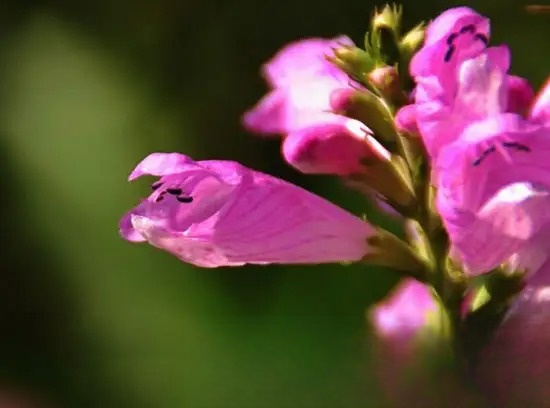
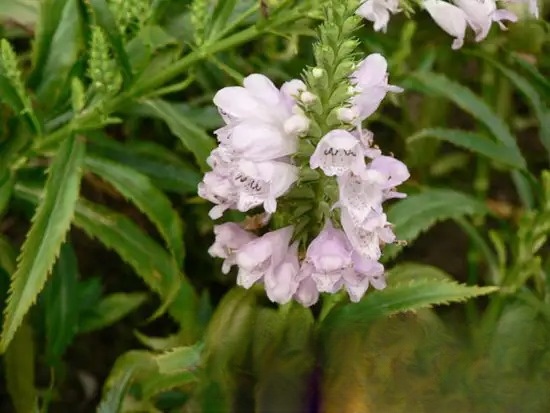
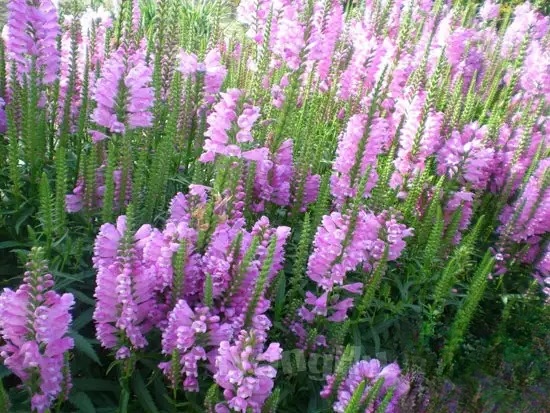
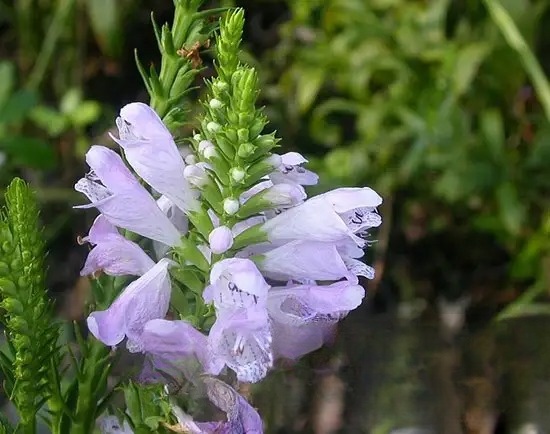
Tips for growing flowers:
For ground planting, it is best to choose a place with deep, fertile soil and plenty of sunlight. For potted plants, fertile and loose culture soil is often used.
Fertilize once every half a month, but control the amount of fertilizer to prevent the plant from growing too tall. When the inflorescence emerges, apply 1-2 more times of phosphorus and potassium fertilizer, or use Huiyou 15-15-30 pot flower fertilizer. With sufficient fertilizer, water and sunlight, it will bloom continuously throughout the summer.
Keep the soil moist during the growing season and supply sufficient water. Do not let the soil in the pot become too dry.
During the growth period of new plants, pay attention to providing sufficient sunlight and place the flower pot in a south-facing window. If there is insufficient light for a long time, the branches and leaves will grow too long and the internodes will be too long, affecting the beauty of the tree shape. In the summer, the sun is scorching, so shade it. When the temperature is very high and dry, spray the plant with water 1-2 times a day to prevent the leaves from burning or falling off due to excessive dryness. When the temperature drops in late autumn, the flower pot should be placed in a south-facing window that is sheltered from the wind. As long as the soil remains moist and the room temperature is not lower than 5℃, it can survive the winter and grow again in the spring of the following year.
Random grass is often damaged by rhizome rot, leaf spot and rust. If rhizome rot occurs, it should be removed and burned in time to prevent summer delay. For other diseases, spray 600 times diluted 65% mancozeb wettable powder for prevention and control.
When the seedlings are 15 cm tall, pinch off the top to promote branching. After the first batch of flowers, remove the remaining flowers in time and apply manure twice to promote the growth of new shoots. If managed properly, you can enjoy the beautiful flowers again.
The propagation of random grass can be done by division, cuttings, or sowing.
Division can be done in early spring before the plants sprout and in combination with repotting. It usually takes about 3 years to divide the plants. When dividing the plants, use a sharp knife to divide the plant cluster into 2-4 small clusters according to the size of the cluster. Each small cluster should preserve the fibrous roots as much as possible and plant them in 2-4 small flower pots. Keep the pot soil moist and it will survive soon.
Cuttings can be done in spring, summer and autumn except winter. Cut 8-10 cm long segments of new shoots that sprouted that year in late spring and early summer, and cut them into rice husk ash or directly into potting soil. Cut 2-4 plants per medium-sized flower pot. Keep the potting soil moist after cutting, and it will take about half a month to take root. After the survival and sprouting of new shoots, apply a thin cake fertilizer water once; when the new seedlings grow to about 10 cm, pinch off the top, leaving only 2 nodes, to control the plant height and promote its multiple branches. Later, you can decide whether to pinch off the top again according to the development situation. If it does not grow too high, you don't need to pinch it again.
Origin: China, India
Type: Flowering plant
Flowering period: July-September.
Sunlight: Requires plenty of sunlight, not shade-tolerant.
Temperature: Likes warmth, not cold-tolerant.
Soil: Not strict on soil, but sulphur pine fertile, well-drained soil is preferred.
Water: Strong, likes dry climate, avoids water and humidity.
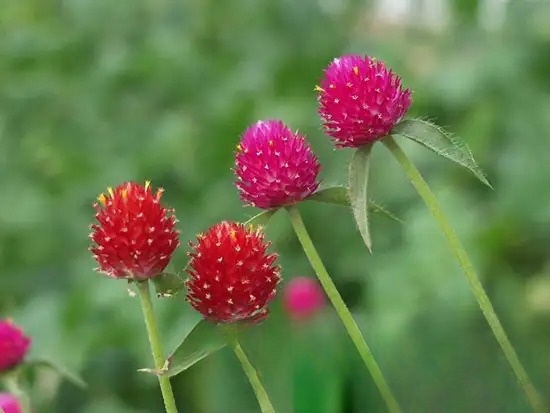
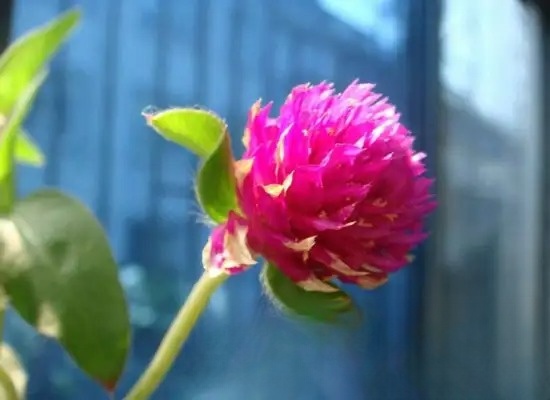
Tips for growing flowers:
Because of its membranous flowers and hairy leaves, the amaranth is particularly drought-resistant. Therefore, when planted in the field, it does not need to be watered frequently. Management is similar to that of woody flowers, and there are very few diseases and pests.
Apply enough basal fertilizer when planting, and no additional fertilizer is required later.
Avoid waterlogging and pay attention to drainage in summer.
The root system is shallow, and individual plants are prone to lodging, so they need to be supported by pillars.
The hibiscus is propagated by sowing. In spring, it can be sown in pots in the greenhouse in March, or sown in a hotbed. After the temperature stabilizes and rises in April, it can be sown directly in the open field. The seeds need to be soaked in cold water for 1-2 days. Because the seeds are small and hairy, squeeze out the water after soaking and dry slightly, mix with plant ash to make it loose for sowing. Before sowing, carefully prepare the land and water it. After sowing, cover it with a little soil or no soil, cover it with grass or film to keep it moist. The temperature is maintained at 18-20℃. It will germinate about 10 days after sowing. The seedlings are divided when they are about 3 cm tall, and potted or planted in flower beds when they are about 10 cm tall.
The inflorescence of Amaranthus radiata can be used as medicine to treat whooping cough, asthma and other diseases.
grass Origin: Australia, Java, Indonesia, etc.
Type: foliage plant
Flowering period: ---.
Sunlight: Extremely shade-tolerant.
Temperature: Prefers warmth.
Soil: Often epiphytic on tree trunks and branches or bark cracks, and can also grow on shallow peat soil or leaf mold.
Water: Prefers shade and humidity, but also has a certain ability to tolerate early.
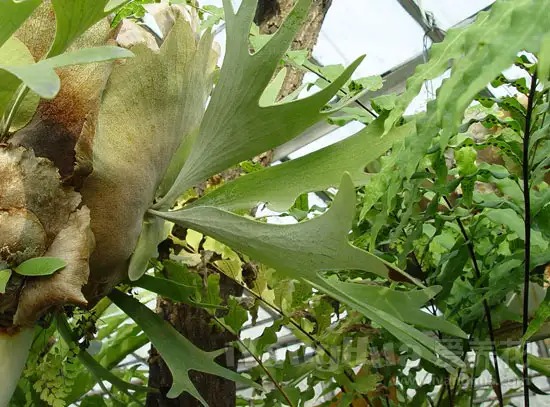

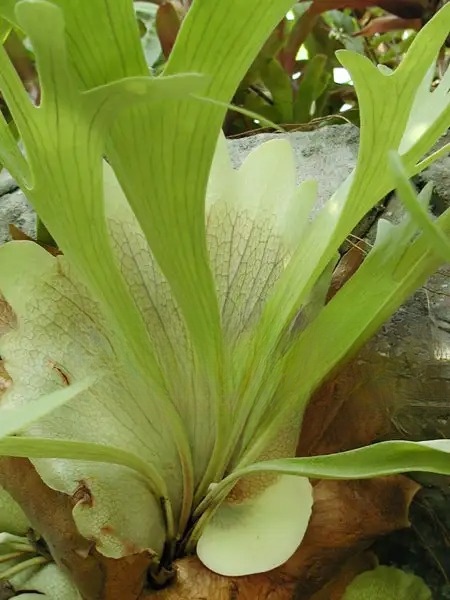
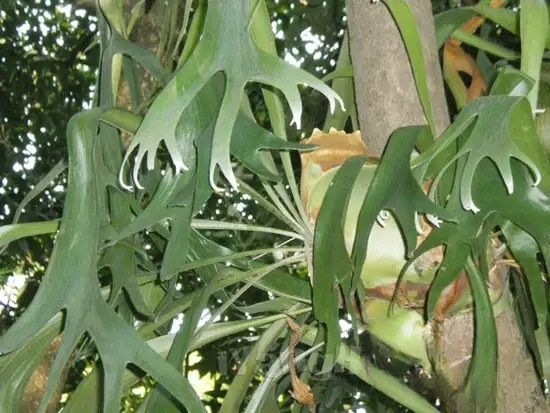
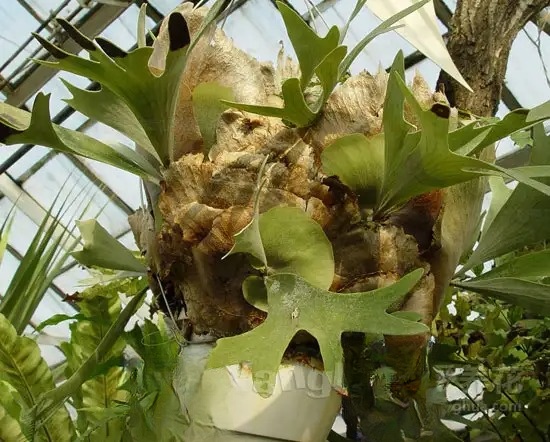
Tips for growing flowers:
Staghorn fern is an epiphyte, and its cultivation method is different from that of common potted flowers. Usually, a small amount of fern roots, moss or leaf mold plus a small amount of decomposed dry cow dung are used as the cultivation medium, tied to a log with bark, or planted in a flower pot, wooden frame, or coconut shell made into a pot and planted in it.
Applying a small amount of liquid fertilizer during the growing period can promote lush growth, but excessive fertilization is not advisable.
Staghorn fern grows very luxuriantly in an environment with relatively high air humidity and needs less watering. Therefore, it is very suitable for greenhouse cultivation. Generally, the simplest watering method for indoor cultivation is to soak the whole plant in water once a week. In the cold winter season, water less and keep it appropriately dry.
Staghorn ferns are afraid of direct sunlight and grow well near bright indoor windows. When grown in a greenhouse, 50%-70% of the sunlight should be blocked in summer, and about 30% in winter is more suitable. Although Staghorn ferns have a strong ability to adapt to weak light, they grow slowly and become weak when there is insufficient light.
The suitable growth temperature is 10-15℃ at night and 20-25℃ during the day. It can also grow well in an environment of 33-35℃ during the day, but the humidity must be very high. Staghorn fern can sometimes withstand temperatures of several degrees below zero without being harmed in its native habitat, but it must be in a very dry environment.
Staghorn fern is usually propagated by division, but can also be propagated by spore sowing. After being cultivated for more than one year, mature plants often produce many small shoots at the base. When they grow to about 10 cm in height, the roots and shield-shaped leaves can be cut off and planted separately as new plants. For large-scale propagation, spore sowing can be used.
Origin: In the mountains and fields of the south, Malaysia, Indonesia, etc.
Type: Flowering plant
Flowering period: May-November.
Sunlight: Suitable for an environment with sufficient light, tolerant to semi-shade.
Temperature: Likes warmth, not cold-resistant, the suitable temperature for growth is 25-28℃.
Soil: Requirements, humus-containing, loose, fertile, slightly acidic soil.
Water: Likes moisture, but afraid of stagnant water, drought-tolerant.
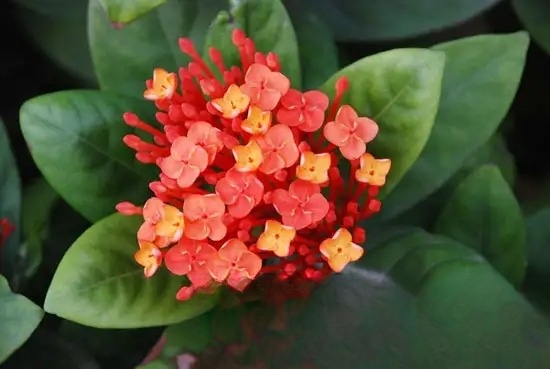

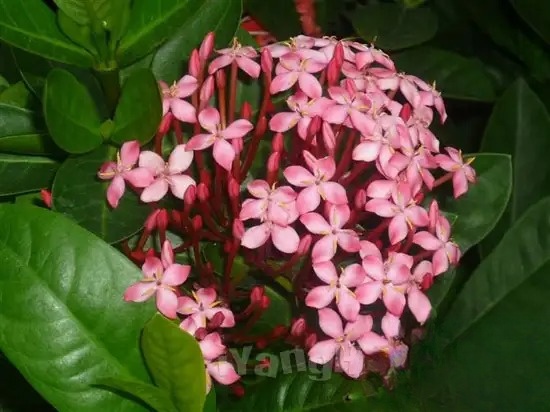
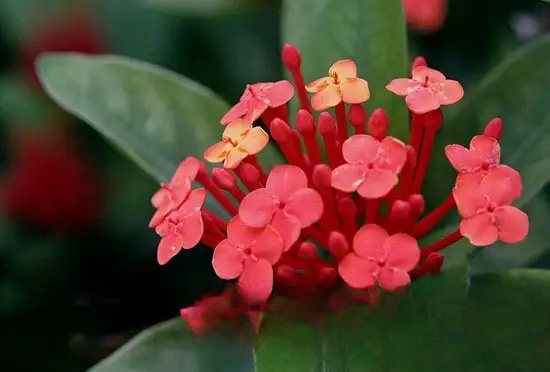


Tips for growing flowers:
For potted plants, you can choose a substrate that is a mixture of leaf mold, garden soil, and coarse river sand in a ratio of 2:1:1 and then disinfected.
During the growing season, apply liquid fertilizer once every half a month using a mixture of nitrogen, phosphorus, potassium, ferrous sulfate and horseshoe slices in a ratio of 1:1:1:2:3 and add water to allow the fertilizer to decompose and ferment.
Ixora likes a humid environment, but is afraid of stagnant water. In spring and autumn, water it thoroughly once every three days, and in summer, water it once every morning and evening. In order to maintain a high humidity, you should also spray water on the leaves of the plant frequently in summer, and do not water it on rainy days. If it rains, pour out the water in the pot in time to prevent water rot.
In spring and autumn, place potted flowers in a sunny place away from the wind. In summer, place them under a shade shed or indoors to avoid direct sunlight. In winter, the light is softer, so they should be fully exposed to light. In winter, the indoor temperature should be kept between 12-18℃. They can be taken out of the room after Qingming Festival in spring, and should be brought back in time in autumn when the temperature drops below 15℃.
Pruning is usually done in spring after the plant is taken out of the house. It is mainly to thin the branches appropriately to facilitate ventilation and light. In addition, proper pinching during the flowering period can make it bud and bloom more. Generally, the pot is changed once every two years, and the best time to change the pot is in early May. When changing the pot, the old roots of the plant should be properly cut off, and the prepared culture soil should be added after the drainage layer is prepared, and some horseshoe slices should be applied as base fertilizer.
Ixora can be propagated by sowing, layering, or cuttings. Cuttings can be carried out during the growing season, especially in June and July. Take 2-3 nodes of a one-year-old full-grown branch, insert it into the sand, shade and keep warm, and it will take about 50 days to take root. Layering is carried out in early spring. For newly propagated seedlings, they should be placed in a semi-shaded place for maintenance after potting. After they survive and sprout new shoots, apply thin fertilizer once every 10-15 days. When the weather is dry, pay attention to spraying water to increase humidity. When the seedlings grow to about 15 cm, they should be pinched to promote side branches and make the plant plump.
Origin: Quebec, Canada, south to Georgia, Maine, Michigan and North Carolina in the United States
Type: Fragrant
Flowering period: June-September
Sunlight: Prefers sunny environment, also tolerates semi-shade
Temperature: Prefers cool, cold-resistant
Soil: Strong adaptability, not selective soil, grows most vigorously in moist, semi-shaded shrubs and woodlands.
Water: Avoid excessive dryness.



Tips for growing flowers:
American mint was introduced to Europe about 300 years ago and has a cultivation history of more than 200 years. It has long been cultivated as a spice crop. It grows best in deep, moist, organic-rich sandy loam under the forest. It can overwinter in the open field in North China and is evergreen in Nanjing in winter.
Spring-sown seedlings can bloom in the same year. Plants are usually transplanted in spring in combination with pruning. The appropriate spacing between rows and plants is 30 cm × 40 cm. Potted plants have 3-5 plants in each pot. Division is carried out every 2-3 years to prevent the plants from being too dense, which will affect plant growth, flowering and fruiting, and reduce the ornamental effect.
During the growing season, sufficient fertilizer should be applied, and more phosphorus and potassium fertilizers should be applied. This will help the plant to bloom more and more, and reduce the occurrence of diseases and insect pests.
Water thoroughly during the growing season.
Generally, proper pruning is done in spring, and the top is pinched once in May and June to adjust the plant height, which is conducive to forming a full plant shape and lush flowers and leaves. Pay attention to maintaining good ventilation and timely thinning and removing diseased and insect-infested branches and leaves.
American mint is often propagated by division, but can also be propagated by sowing and cuttings.
Division is usually done in autumn and spring (dormant period). Cut 2-3 branches and plant them as a small clump.
Cuttings are generally carried out in spring, summer and autumn. Cut 1-2 year old, full branches with a length of 5-10 cm and insert them into a cutting medium made of a mixture of peat, sand, rice husk ash, vermiculite , etc. Keep it semi-shaded and moist, and it will take root in about 30 days.
Sowing is mostly done in spring and autumn. New seeds can reach a germination rate of more than 90% after 2-3 weeks at 20-25℃. The seedlings should be well ventilated and transplanted in time.
It can be grown in potted plants for viewing at home. When the flowers bloom in summer, they attract countless bees, butterflies and other insects to collect nectar, which is very lively.
Origin: Tropical rain forests from Mexico to Brazil
Type: Flowering plant
Flowering period: Blooms in the evening in summer and autumn, mostly from 21:00 to midnight, about 4 hours from flowering to withering.
Sunlight: Prefers semi-shaded environment, avoids strong sunlight.
Temperature: Prefers warmth, not cold-resistant.
Soil: Prefers loose, fertile and well-drained soil.
Water: Relatively drought-resistant, avoids soil waterlogging.
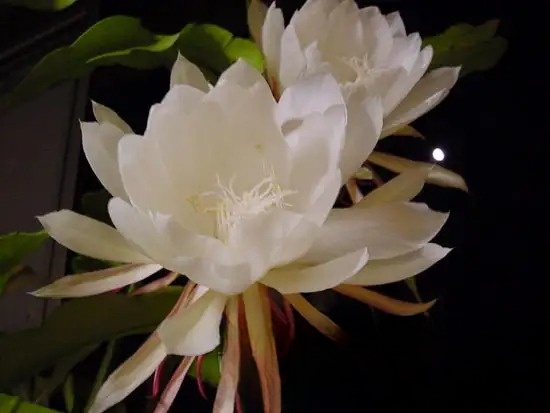
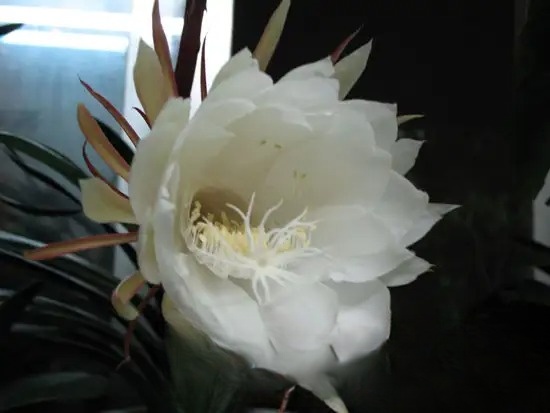
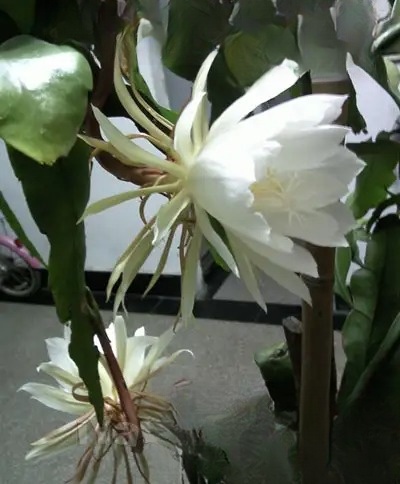
Tips for growing flowers:
The potting soil can be prepared by mixing leaf mold, garden soil and 1/5 coarse sand. Generally, the pot should be changed once every year in early spring. When changing the pot, the dead roots and some old roots are cut off, about 1/2 of the old soil is removed, and new culture soil is added.
During the growth period, apply thin cake fertilizer water once every half a month. If a small amount of rice vinegar or ferrous sulfate can be added to the liquid fertilizer, the growth will be better. After the buds appear, apply 1-2 times of 0.2% potassium dihydrogen phosphate, the flowers will be large and colorful. After the flowers fade, apply 1-2 more liquid fertilizers, which is conducive to flowering next year.
In spring and autumn, watering should be done when the soil is dry and when the soil is wet. In summer, watering should be done more often, but water should not accumulate in the pot, otherwise the roots will rot easily. In the dry and hot season, spray clean water on the plants once in the morning and evening every day to increase the air humidity, which is conducive to growth and flowering.
Epiphyllum prefers semi-shade and should be cultivated outdoors in semi-shade in spring and autumn to prevent direct sunlight. In summer, it should be placed in a bright and well-ventilated place indoors. It can also be placed on a north-facing balcony or under the shade of a large tree, but strong sunlight should be avoided, otherwise it will easily cause the abnormal stems to wilt and reduce its ornamental value.
Potted plants in northern areas can generally be moved indoors for the winter in early or mid-October. During the winter, place them in a sunny place, keep the room temperature at around 10°C, and control watering to keep the pot soil from being too dry.
Epiphyllum can be propagated by cuttings and sowing. Cuttings are simple and easy, and can shorten the flowering time, so this method is often used. Cuttings are most suitable in May and June. Cuttings should be selected from strong, full and deformed stems, not too tender. Cut the cuttings into small pieces of 10-15 cm long, place them in a well-ventilated place to dry for 2-3 days, and then cut them. The insertion depth is 1/3 of the cuttings. After insertion, the soil needs to be kept moist. At a temperature of 18-25℃, roots will take place in 20-30 days. Seedlings grow slowly and take 4-5 years to bloom.
How to make Epiphyllum bloom during the day?
Epiphyllum usually blooms between 9 and 12 o'clock in the evening and withers in 4 to 5 hours, hence the saying "ephemeral".
For a long time, horticultural authors have done a lot of experimental work, and experiments have proved that the method of "reversing day and night" can change the habit of Epiphyllum to bloom at night, and allow it to bloom during the day, so that more people can appreciate its graceful posture.
The specific method is: when the flower buds swell and begin to bend upward, move them to a dark room during the day, or use black plastic film to make a light-shielding cover to cover them so that no light can penetrate. From 7 pm to 6 am the next morning, use strong electric light to illuminate them. After such light treatment, after 7-10 days, the shy Epiphyllum will be able to bloom during the day, and the duration can be as long as 1 day. If you want to delay the opening of Epiphyllum by 1-2 days, you can cover the entire plant with a black cover when it is about to bloom and place it in a low temperature environment, so that it can be delayed according to the date people set.
The flowers and modified stems of Epiphyllum can be used as medicine. The flowers have the effects of clearing heat and moistening the lungs, calming the mind, and treating coughs, bruises, burns, etc.
Origin: South America
Type: ornamental plant
Flowering period: July-October
Sunlight: Negative flowers, afraid of extreme heat
Temperature: Likes warmth, but afraid of extreme heat, and is not cold- resistant
Soil: Requires loose soil rich in organic matter and strong water and fertilizer retention capacity
Water: Shallow-rooted plants, like moisture, afraid of waterlogging.
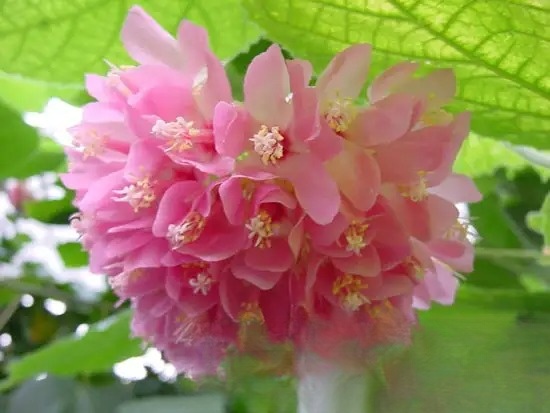
Tips for growing flowers:
The soil for cultivation can be prepared by mixing 5 parts of leaf mold, 3 parts of garden soil, and 2 parts of river sand, and adding a little bone meal as base fertilizer. Plant in spring, and place it outdoors in semi-dark places after rooting and germination, and move it to a ventilated and shaded place in summer. It can also be placed in a ventilated and sunny place indoors to avoid direct sunlight.
The stems and leaves of the bulbous begonia are tender and juicy, and they are very sensitive to changes in the environment. They should not be moved during the growth period, and should be placed in a place with scattered light and ventilation. If they are suddenly moved from indoors to outdoors or vice versa, they are prone to buds, flowers, and leaves falling, affecting normal growth and flowering.
Begonia bulbifera prefers fertilizer. Fertilization should follow the principle of "thin fertilizer and frequent application". Fertilization should be carried out once every 10 days or so during the growth period. If 0.5% superphosphate aqueous solution can be applied 2-3 times when the flower buds are formed, it will be beneficial for large and colorful flowers and a long flowering period. Generally, fertilization should be stopped in hot summer and winter.
Begonia bulbosa is a shallow-rooted plant, so watering should be done properly. Water less during the budding period to keep the soil slightly moist, otherwise the roots will rot easily. Keep the soil moist during the growth period, and spray water frequently in summer to increase air humidity. Water less during the flowering period, so that the soil is semi-dry. Watering should also be controlled after the leaves turn yellow in late autumn to facilitate the plant to enter a dormant period. In winter, the temperature is low and the whole plant is dormant, so watering should be strictly controlled to keep the soil dry, otherwise the roots will rot easily.
Begonia bulbifera is a negative flower, it likes warmth, but is afraid of extreme heat and is not cold-resistant. The optimum growth temperature is 15-24℃, and the temperature above 32℃ will easily cause the leaves and flower buds to fall off. It is afraid of strong light exposure, which can easily cause the leaves to thicken and curl.
If the plant encounters high temperature and high humidity during the growing period, stem rot and root rot often occur . The room temperature and watering amount should be controlled, and the plant should be sprayed with 300 times diluted 25% carbendazim wettable powder.
In an environment with high room temperature and poor ventilation, it is easy to be harmed by beetles and aphids , as well as leaf roller larvae and thrips . Beetles are treated with 40% oxidizedSpray 1000 times dimethoate emulsion to kill aphids, thrips and leaf rollers with 10% pyrethrum emulsion and 2000 times dilution of dernetin .
Bulbous begonias are commonly propagated by sowing, cuttings and tuber division.
(1) Seed propagation: Use small seeds to sow indoors in early spring from January to February, at a temperature of about 18-21°C. Seedlings will emerge in 2-4 weeks. The management after sowing and germination is the same as that of Begonia sempervirens.
(2) Cutting propagation: June to July is the best time. Choose a strong stem with terminal buds, about 10 cm long, remove the leaves at the base, leaving only 1-2 leaves at the top, and wait for the cut to dry before inserting it into coarse sand or vermiculite . Keep the sand bed moist. At room temperature of 21°C, it will heal and take root in about 3 weeks. Put it in a pot two months after cutting, and it will bloom that year.
The bulbous begonia plant is fragile and tender. When it blooms, a support must be set up to prevent it from falling over or breaking. When the temperature drops below 5℃, the bulbous begonia stops growing and enters a dormant period. At this time, the above-ground part can be cut off, the bulbs can be dug out, and after drying slightly, they can be placed in a cold room for sand storage. If there are fewer plants, they can also be left in the pot and covered with fine sand, keeping the pot soil slightly moist, and stored in a ventilated and dry place in a dry room. The storage temperature should be 5-8℃, and the lowest should not be lower than 2℃, otherwise the bulbs will be easily damaged by cold.
Origin: Southern North America
Type: Flowering Plant
Flowering Period: June-September.
Sunlight: Prefers a sunny environment, and can also grow in semi-shaded areas.
Temperature: Prefers warmth, cold-resistant.
Soil: Not very demanding on soil, and is more suitable for its growth and development in fertile and moist calcareous soil.
Water: Strong adaptability, relatively early resistance.
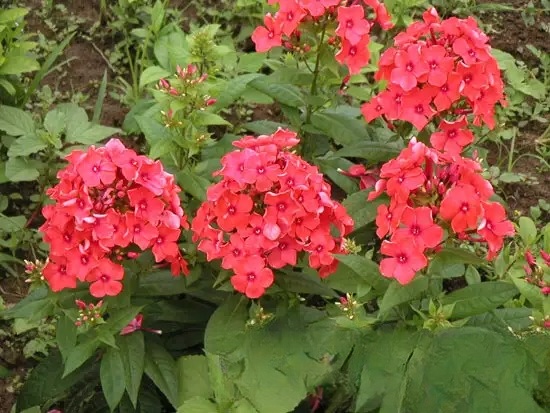
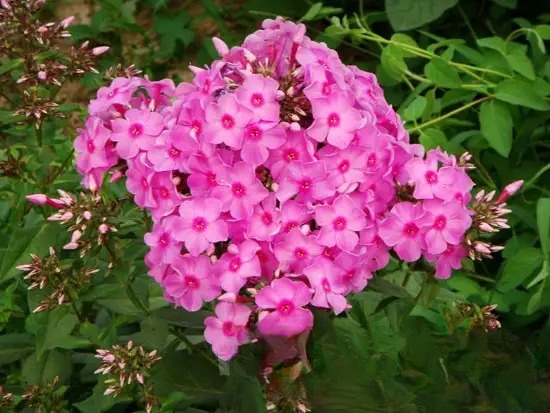
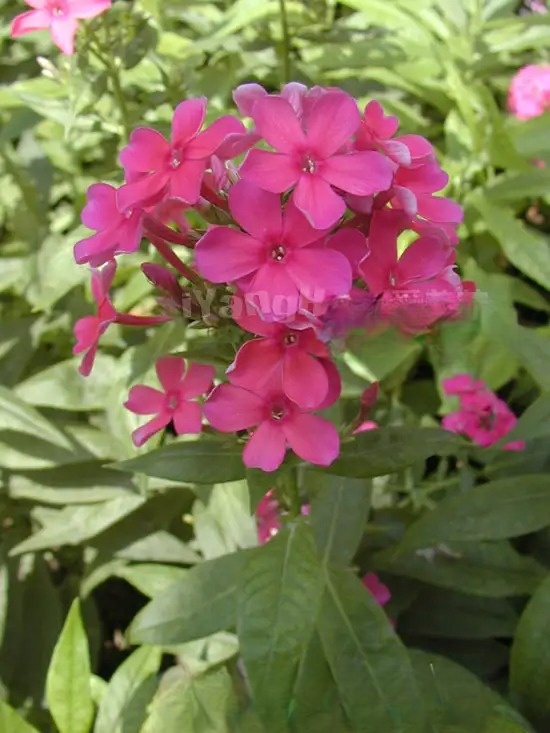
When potting, it is advisable to use a slightly larger flower pot, and the potting soil should be mixed with 3 parts garden soil, 1 part compost, and 1 part rice husk ash. Seedlings or division seedlings can be potted directly. If transplanted during the growing season, they should be brought with soil balls to ensure survival.
Fertilizer: manure or cake fertilizer water, water once every 10-15 days. When the seedlings grow taller, pay attention to the head to control the height and make them bloom on schedule. If 4×10 15% paclobutrazol is applied once, it can inhibit the excessive growth of the plants.
During the growing season, the soil should be kept moist, but not overwatered unless it is dry. After the first batch of flowers, the remaining flowers should be removed in time, and topdressing should be strengthened to promote the sprouting of new shoots between the axils of the leaves to bloom again. The above-ground part withers in winter, and the underground part can survive the winter as long as the soil is kept slightly moist.
Perennial phlox can be propagated by division, layering and cuttings. Division should be done in early spring or autumn. Layering can be done in spring, summer and autumn. Cuttings are divided into root cuttings, stem cuttings and leaf cuttings. Root cuttings can be cut off from a 3 cm long root segment when dividing the plant, buried flat in sandy soil, kept moist at about 20°C, and new buds will emerge in about 1 month; stem cuttings are mostly done after flowering, take branches with full growth, cut off 5-6 cm long as cuttings, insert them in sandy soil, keep them moist to root; leaf cuttings are taken from leaves with axillary buds in summer, take off the 2 cm long stem, and insert them in sandy soil, and they will root in about 1 month.
Origin: Southern Africa, also cultivated in various places
Type: ornamental plant
Flowering period: May-June.
Sunlight: Likes strong light.
Temperature: Likes warm absorption, poor cold resistance, afraid of high temperature.
Soil: Not very demanding on soil, can adapt to fertile and poor.
Water: Likes dry and ventilated environment, afraid of water.
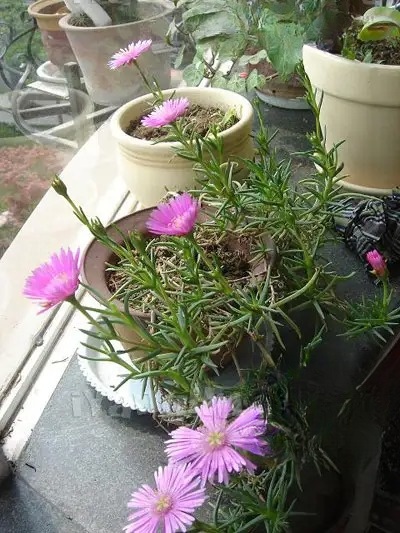
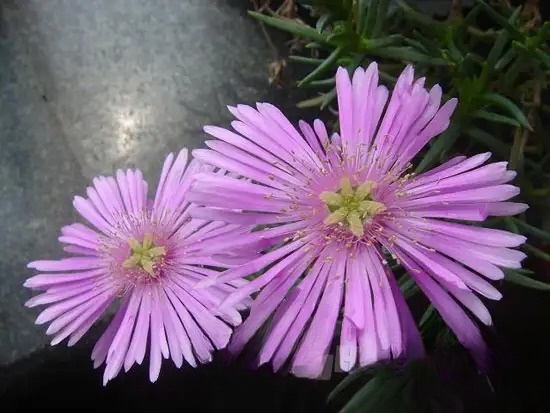
Tips for growing flowers:
When planting seedlings that have survived cuttings, 3-5 plants can be planted in one flowerpot. The potting soil should be sandy culture soil and some decomposed cake fertilizer should be added as base fertilizer.
Because old plants do not bloom well, new plants are cultivated every 2-3 years.
Apply a thin layer of fertilizer once every half month to promote good plant development, lush leaves and abundant flowers.
Water should be provided sufficiently during the growing period, and watering should be controlled during the rainy and rainy seasons.
During the growing season, it needs to be exposed to sunlight for at least 6 hours a day, so that it can grow luxuriantly and bloom brightly. The suitable temperature for growth is 18-25℃. In midsummer, it should be placed in a cool place, watering should be controlled, and it should be semi-dormant. In winter, it should be placed indoors in a sunny place, and the room temperature should be kept between 5-10℃.
Pinch the top once in the early growth stage. Prune and shape the plant properly after flowering to keep the plant shape beautiful.
The fruit of Mesembryanthemum is not easy to mature and it is difficult to collect seeds, so it is mostly propagated by cuttings. Spring and autumn are the cutting period. Choose full branches and cut tender shoots with 3-4 leaves and about 5 cm long as cuttings. Insert them into sandy loam and maintain a certain temperature and humidity. They will take root in about 1 month. If the cuttings are treated with 2% sugar water for 10 hours before insertion, the rooting effect will be better. It can also be propagated by sowing in spring. The seeds are easy to germinate, but the seeds are not easy to collect.
Origin: Central China
Type: Flowering plant
Flowering period: July-September.
Sunlight: Likes light. If the light is insufficient, it can grow but is slender.
Temperature: Likes warmth. Seedlings have poor cold resistance.
Soil: Requires fertile, deep, well-drained sandy soil.
Water: Likes moisture.
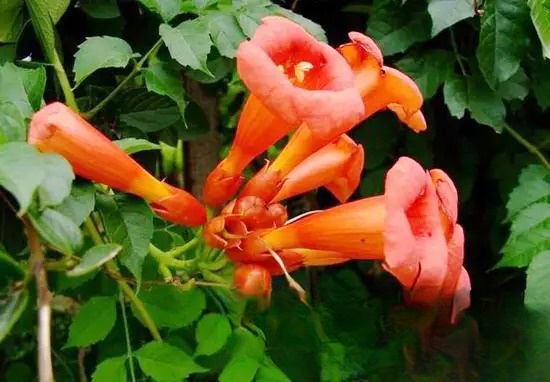

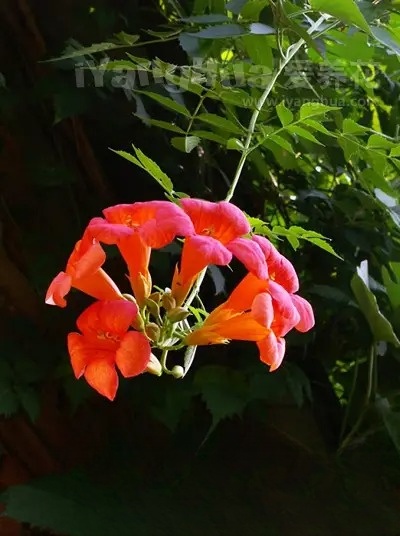

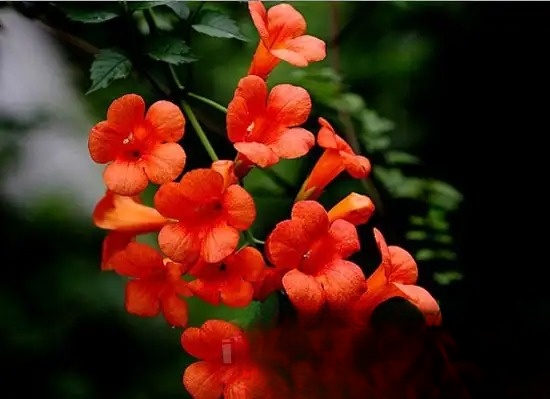
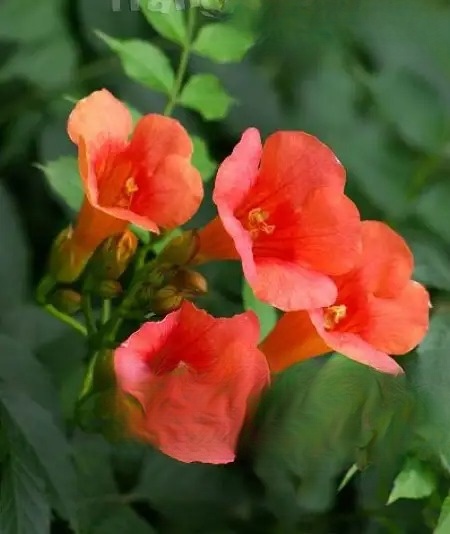
Tips for growing flowers:
For families living in high-rise buildings, they can place a large flower pot in a sunny corner, plant it with manure or leaf mold, and build a frame for it to grow on the wall; or place the flower pot on a high shelf, pay attention to pruning and shaping during the growing period to make it a hanging bonsai. In the summer, the branches of the year can be cut off at 5-6 cm to make it sprout luxuriant branches and leaves and bloom more, and tied into an artistic frame for indoor decoration of windowsills or tables.
Trumpet creeper likes fertilizer and moisture, so water and fertilizer management should be strengthened after germination in spring. Generally, liquid fertilizer should be applied 1-2 times a month.
During the flowering period, a certain humidity should be maintained. The soil in the pot should not be too dry, but also not too wet.
Trumpet creeper has fewer diseases and pests, but in the dry seasons of spring and autumn, its branches and shoots are easily damaged by aphids , so timely prevention and control should be taken.
For plants planted under trellises, in order to promote vigorous growth and abundant flowering, the weak, winter-withered and crowded branches can be cut off before budding in early spring to allow ventilation and light to pass, which is conducive to growth and flowering.
Lingbi can be propagated by cuttings, layering and division. Choose sunny, well-drained, deep and fertile loam for planting. Cuttings can be carried out in spring and summer. Choose thicker one-year-old branches, cut them into 10-15 cm long cuttings, cut off the leaves, and then insert 2/3 of the cuttings into the soil on the cutting bed with a row spacing of 15-20 cm and a plant spacing of 5 cm, press tightly and water.
In spring, cover with plastic film to keep it at a high temperature and a certain humidity, generally at 23-25℃, and it will take root about 20 days after insertion. If you cut branches with aerial roots and use them for stem insertion, it will be easier to survive.
The stems, leaves and flowers of Trumpet Creeper can all be used as medicine, and have the effects of bleeding and breaking up blood stasis.
Origin: China, Japan
Type: Flowering Plant
Flowering Period: May-July
Sunlight: Prefers semi-shady environment
Temperature: Not resistant to high temperature and humidity, not resistant to cold, needs proper protection in northern regions and can overwinter in the open field
Soil: Prefers to grow in well-drained, moderately moist soil
Water: Not resistant to waterlogging.

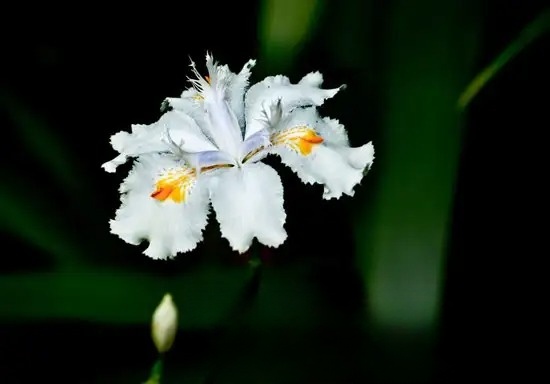
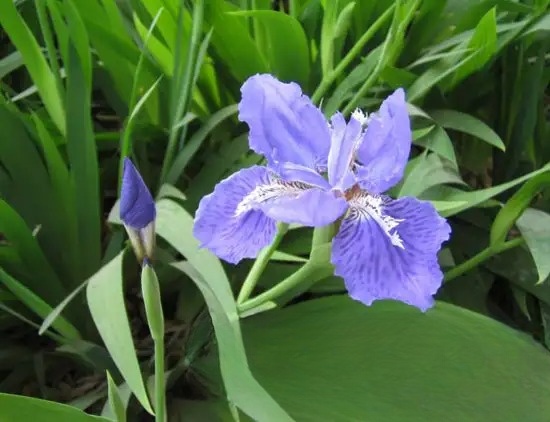

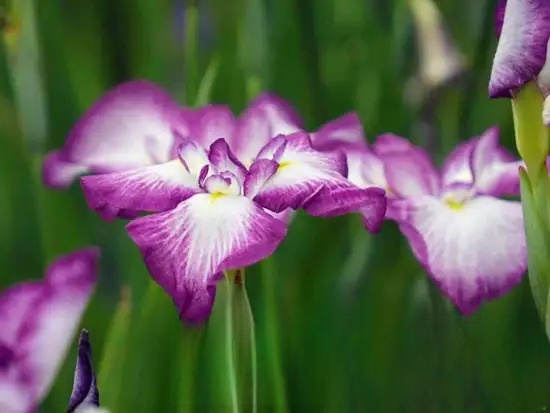

Tips for growing flowers:
To cultivate irises, choose a sunny, well-drained and moderately moist place. Before planting, the soil should be fully tilled, and rotted compost and a small amount of bone meal, plant ash, etc. should be applied as base fertilizer. Planting should not be too deep, and the rhizomes should be pressed tightly.
After the plants turn yellow in autumn, remove the dead leaves on the ground in time, and cover them appropriately in winter to ensure they can safely overwinter.
In spring, 1-2 times of decomposed thin cake fertilizer or compound flower fertilizer should be applied from budding to flowering. It is best to apply liquid fertilizer again after the flowers wither.
Water thoroughly once after planting, and then add water according to the actual dryness and wetness of the soil. Generally, it is better to keep the soil slightly dry, and do not let the soil accumulate water or be too wet for a long time to avoid root rot or disease.
The main pest of iris is bean beetle. Adults gnaw on leaves and petals, affecting plant growth and people's appreciation. Adults are 10-12 mm long, dark green in color, with a shiny appearance. The middle of the forewings is yellow-brown, surrounded by green, and there are two white hair-like spots on the back of the last segment of the abdomen.
Prevention and control methods: Artificially capture adults, and use 800-1000 times diluted dichlorodiphenyltrichloroethane to irrigate the roots during the larval stage to poison the larvae; when adults occur in large numbers, use 1000 times diluted dichlorodiphenyltrichloroethane, carbofuran, and cypermethrin, spray 2-3 times.
(1) Division method: Iris is usually propagated by division. Mature plants can be divided after 3-4 years of planting. When dividing, cut each rhizome into small pieces with 2-3 buds, and plant them in wet sand at a temperature of 20°C. They will take root in 20-30 days.
Origin: Central and South America
Type: Flowering plant
Flowering period: May-June
Sunlight: Prefers semi-shade
Temperature: Prefers warmth, not very cold-resistant, avoids frost
Soil: Grows well in loose, moist loam
Water: Prefers a moist environment, is relatively drought-resistant, and also water-resistant, often grows near pools and ditches
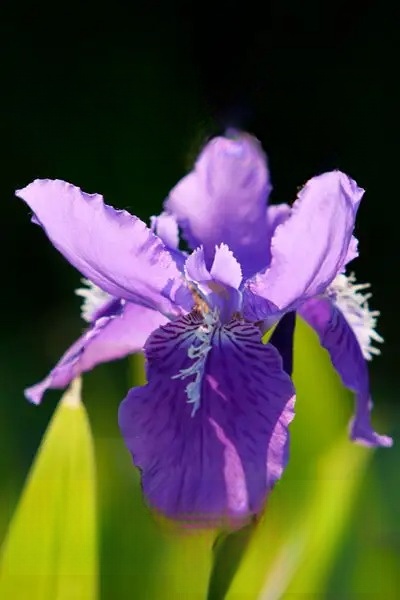
Tips for growing flowers:
It is easy to cultivate and can survive in loose, moist and well-drained soil.
In the hot and dry summer, water should be sprayed frequently to reduce the temperature and increase the air humidity. April to October is its growing season. At this time, decomposed thin manure should be applied once every half a month. After each fertilization, spray the leaves with clean water to keep the leaves clean and bright green. When the weather turns cool in November, the plant stops growing. At this time, stop fertilizing and reduce watering. The pot soil can be slightly moist.
Bright-leaved iris has a strong ability to adapt to the environment, and its cultivation and management do not require high standards. However, from June to September, the sun is very scorching, so it must be avoided from exposure to the sun. It is necessary to pay attention to shade, or place the flower pot in a shade shed or under the shade of a tree. In the spring, it should be moved outdoors to a semi-shaded place, and the amount of watering should be gradually increased to keep the soil moist. It should also be given sufficient scattered light. This will be more conducive to its growth and make the leaves green and bright. After November, the flower pot should be moved indoors, and the room temperature should be kept above 6°C.
The propagation of bright-leaved iris is mostly done by division. There is no strict limit on the time of division. It can be done in spring, summer and autumn except winter. Generally, the new daughter plants growing from the leaf ends can be used, cut off and planted in small flower pots, first placed in the shade for maintenance, and then moved to semi-shaded places after 2-3 weeks to let them grow.
If you do not want to use the sub-plants that grow from the leaf tips for reproduction, you can also use the old plants when repotting. Divide the old plants that fill the pot into groups of 2-3 leaves and plant them in several small pots. After 2-3 weeks, signs of survival will appear.
Origin: Northern Hemisphere, almost all over Asia and Europe
Type: Flowering Plant
Flowering Period: May-October
Sunlight: Prefers sunny and well-ventilated environment, avoids dark and humid environment.
Temperature: Prefers warmth, fears heat, and is relatively cold-resistant.
Soil: Prefers loose, fertile, well-drained, humus-rich, slightly acidic sandy loam, avoids soil compaction and barrenness.
Water: Prefers moisture, but can also tolerate a certain degree of dryness.
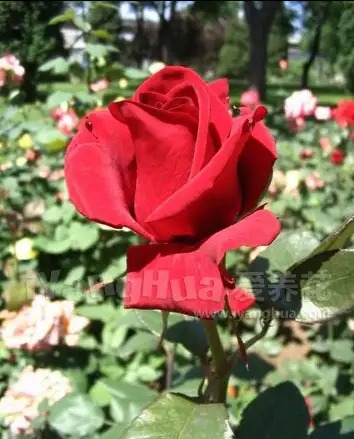

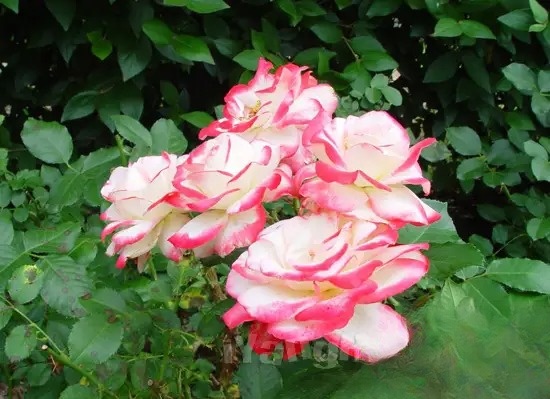
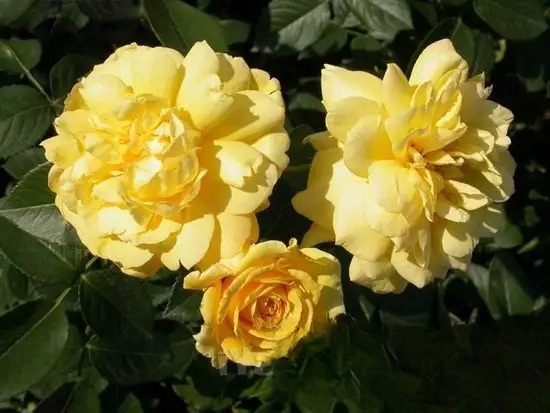
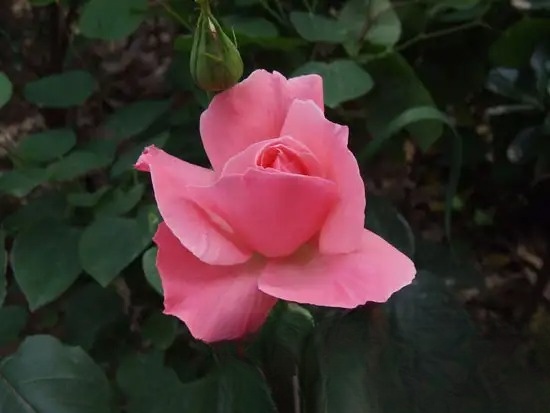
Tips for growing flowers:
Roses prefer slightly acidic soil (pH 6.5-6.8) that is rich in organic matter, loose and fertile, well-ventilated, and has a granular structure. Poor drainage and soil compaction are not conducive to their growth and may even lead to their death. Soils that contain a lot of lime affect the rose's absorption and utilization of some trace elements, which can lead to chlorosis.
Roses like fertilizer. To make them bloom every month, they need to be fertilized continuously to ensure adequate nutrition. When fertilizing, pay attention to the season and variety, and avoid applying raw fertilizers and concentrated fertilizers. The principle of "thin fertilizers and frequent application" should be mastered. According to the actual growth conditions of the plants, topdressing should be applied in a timely and appropriate amount to supplement the lack of nutrients in the soil.
When watering, you should follow the principle of watering thoroughly when the soil is dry. In spring, summer and autumn, watering should be done before 10 am, and in winter, watering should be done between 1 and 2 pm. The water temperature should be slightly lower than the soil temperature in summer, and slightly higher than the soil temperature in winter, which is conducive to the development of the root system.
The suitable temperature for the growth of general rose varieties is 18-25℃ during the day and 10-15℃ at night. If the temperature exceeds 30℃, the growth will be poor. If the temperature is below 5℃, it will enter a dormant period and stop growing. Appropriate shade is needed at noon in midsummer to help cool down.
Roses grow healthily under full sunlight conditions. Generally, they require more than 6 hours of sunlight per day to grow and bloom normally. To avoid high temperatures in summer, they need to be properly shaded and watered, and the number of sunshine hours can be shortened to about 5 hours.
The main disease of roses is brown spot disease . When it first occurs, there are circular spots on the leaves, which then turn dark brown with a yellow halo, and the spots turn yellow around them. In severe cases, a large number of leaves fall, the flowering period is shortened, and the flower shape becomes smaller. When the disease occurs, spray 500-700 times of 75% chlorothalonil wettable powder, or 1000 times of 70% thiophanate-methyl . For powdery mildew, 1500-2000 times of thiophanate-methyl wettable powder can be used for prevention and control. Spray once a week, and spraying 3 times can control the disease.
The main pests of roses are aphids and spider mites . Aphids can be oxidizedUse 1500 times diluted dimethoate emulsion for control, spray continuously for several times; red spider mites can be controlled with 800-1000 times diluted 20% dichlorodicofol wettable powder.
Roses require air circulation. A hot and stuffy environment is not conducive to their growth and development. If the air is too dry, the tender leaves are prone to deformity, and if it is too humid, they are prone to powdery mildew. The most suitable air humidity is 75%-80%.
Pruning is one of the measures to strengthen rose management. Pruning at each growth stage can ensure that the flowers are lush and green all year round.
During the growing season, bud removal, bud beating, and residual flower removal are required. Bud removal means removing the excessive young buds that grow in spring, except for 2-3 on the main branches. Bud beating means removing all the side buds except for the main bud in the middle. Both measures have one purpose, which is to remove waste buds and miscellaneous branches so that nutrients can be concentrated on the main branches. Removing residual flowers means cutting off the flowers and the two compound leaves below them in time when the flowers are in bloom. The purpose is to prevent several axillary buds near the flowers from sprouting weak branches and blooming deformed small flowers, which not only wastes nutrients but also destroys the beauty of the flower shape.
Pruning is also required during the dormant period, and the pruning time is around the Spring Festival. It is mainly for large rose trees that are more than 2 years old to cut off diseased and insect-infested branches, dead branches, weak branches, overlapping branches, and crossed branches from the base.
Roses can be propagated by cuttings, grafting, division, layering, tissue culture and other methods. Among them, potted ornamental plants generally use seedlings propagated by cuttings or grafting.
(1) Cutting method: It is usually carried out in spring or early summer or early autumn, and can be carried out in a greenhouse in winter. In order to improve the survival rate of cuttings, the plant can be girdled or ring-barked first, and then the branches can be cut for cuttings after callus tissue is produced. In addition, electrical induction cuttings or hormones such as indoleacetic acid or indolebutyric acid can be used to promote rooting.
(2) Grafting method: Use wild rose or white rose as rootstock, and graft before the buds sprout in early spring. You can also use the "T" or "gate" bud grafting method in summer. When the buds sprout and branches grow, cut the rootstock and plant it in a flowerpot. In order to cultivate strong seedlings, if the branches that sprout after potting quickly bud and bloom, the flower buds and the two leaves below should be removed together to ensure the healthy growth of the plant. When the spider base sprouts long branches, keep such branches as flowering branches.
In addition to being used for viewing, many varieties of roses are fragrant flowers that can be used to extract essences, and the petals of some varieties can be used to make rose cakes. Dried rose flowers can be used for medicinal purposes.
Origin: South Africa and tropical Africa
Type: ornamental plant
Flowering period: May-September.
Sunlight: Suitable for growing in semi-shady environment in summer.
Temperature: Likes warmth, generally has a period of growth after flowering, mostly enters dormancy in winter, and has weak cold resistance.
Soil: Likes loose, fertile and well-drained sandy loam.
Water: Likes moisture.
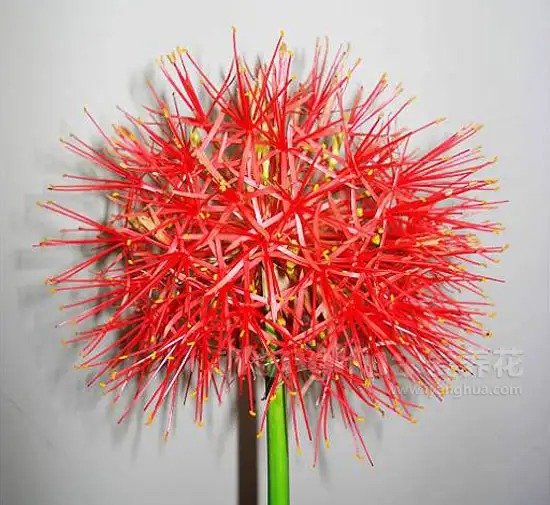
Tips for growing flowers:
It is advisable to use loose, fertile, well-drained culture soil for potting. Generally, the culture soil is mixed with sand in a ratio of 10:1. It is best to spread about 3 cm thick coarse sand on the bottom of the pot to facilitate drainage. Mature plants are generally repotted once a year in spring. When repotting, pay attention to cutting off some old and dead roots and adding new culture soil.
When potting, a small amount of cake fertilizer can be applied as base fertilizer. During the growing season, apply thin cake fertilizer water or compound fertilizer once every 10 days or so.
Usually keep the pot soil moist, avoid overwatering, water accumulation in the pot, too wet pot soil, bulbs are easy to rot. After the frost in East China (November), the leaves begin to turn yellow and gradually enter a dormant period. Water less to allow the pot soil to gradually dry. Stop watering when all the leaves are dry.
The suitable temperature for the growth of tennis flower is 16-26℃, and the temperature at night should be maintained at 10-12℃. The temperature during winter dormancy should not be lower than 5℃, otherwise it is susceptible to frost damage. For open-field cultivation, the bulbs need to be dug out and buried in sand indoors for the winter.
In spring and autumn, it is advisable to cultivate it in a semi-shaded place. When the light is too strong in summer, it needs to be moved to a cool place with shade to avoid strong light exposure, otherwise it is easy to burn the leaves. During the flowering period, it is placed in a place with a lower temperature to extend the flowering period.
If the soil in the pot is too wet, nematodes and slugs are likely to occur in the bulbs. The bulbs can be soaked in 0.5% formalin solution for 3 hours, and the slugs can be sprayed with 3% lime water to kill them.
Tennis flower can be propagated by bulb division and sowing. When repotting in May, separate the bulbs on the mother plant and plant them separately. Generally, it takes two years for the bulbs to bloom.
In warm areas, it can be propagated by sowing. The seeds mature 50-60 days after the flowers fade, and they can be sown immediately after being harvested. Seedlings emerge about 15 days after sowing, and they are transplanted once when the first leaf grows. It takes 4-5 years to cultivate from sowing to flowering.
Origin: tropical America
Type: ornamental plant
Flowering period: June-September.
Sunlight: grows better in slightly shaded places.
Temperature: not cold-resistant, likes warm climate.
Soil: has strong adaptability to soil.
Water: likes moisture.
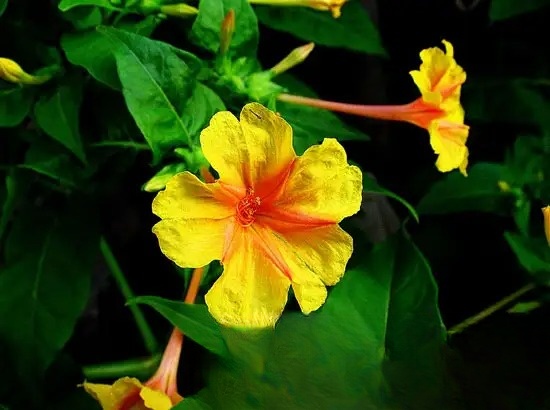
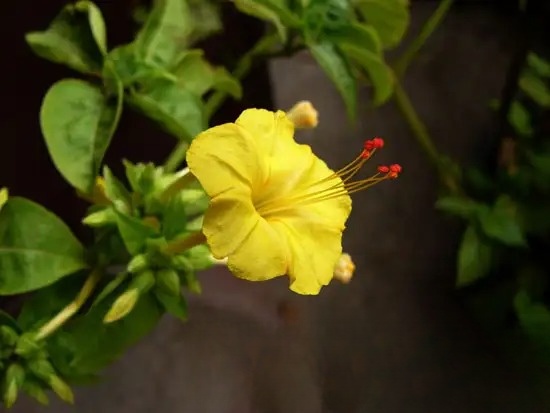
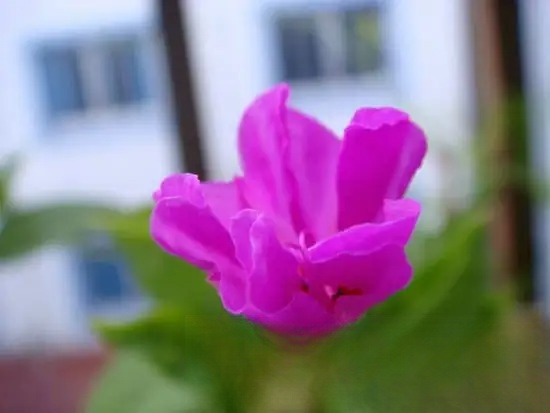
Tips for growing flowers:
It takes about half a year from sowing to the end of the flowering period of Mirabilis jalapa. After flowering, the plant wilts, but the tubers can sprout new plants in the next year. The plants that sprout after 1-2 years are very strong, grow fast, and bloom luxuriantly. After two years, they gradually decline and can no longer be used as bud seedlings. Plants in shaded places are susceptible to powdery mildew and snail damage. It does not need to be watered every day, and it is very easy to manage if it is allowed to grow naturally.
Mirabilis jalapa is propagated by seeds. It is advisable to sow and raise seedlings in March and April. When the seedlings grow 2-4 leaves, the plant spacing is preferably 50-80 cm. Pay attention to shade after transplanting. Mirabilis jalapa is easy to grow and can be managed in a rough manner. Just pay attention to proper fertilization and watering. Mirabilis jalapa is a wind-pollinated flower. Different varieties are very easy to hybridize. If you want to maintain the characteristics of the variety, you should cultivate it in isolation.
Origin: Western China, India, Arabia, etc.
Type: Flowering plant
Flowering period: June-October.
Sunlight: Likes plenty of sunlight, and has strict requirements on light. In an environment with plenty of sunlight and high temperature, the leaves are green, the branches are thick, there are many flower buds, and the fragrance is strong. On the contrary, if there is insufficient light, the branches and leaves will grow too long, the leaves will be light in color, the branches will be thin, the flowers will be few, and the fragrance will be light.
Temperature: It is a tropical plant, which likes warm and humid climate and is not cold-resistant.
Soil: It is suitable to choose loose, fertile and slightly acidic soil.
Water: Afraid of moisture, avoid waterlogging, if the soil is waterlogged, it is easy to cause leaf fall, root rot and death.
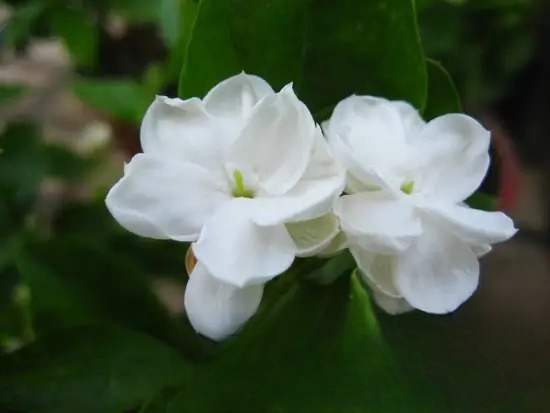

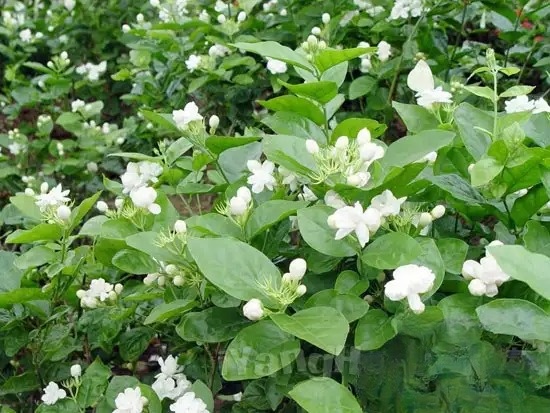
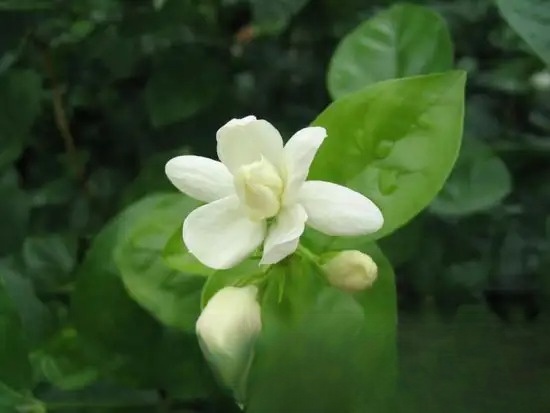
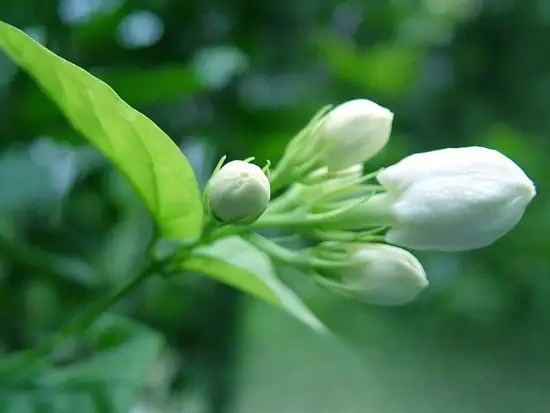
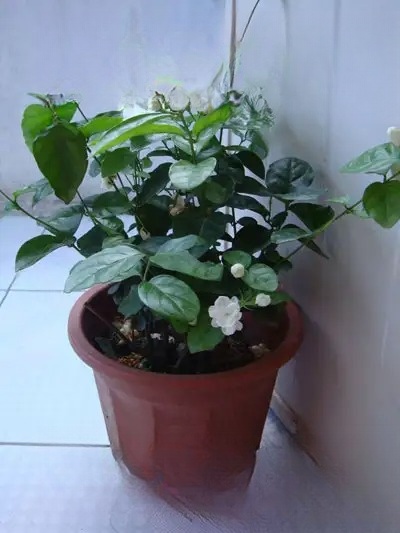
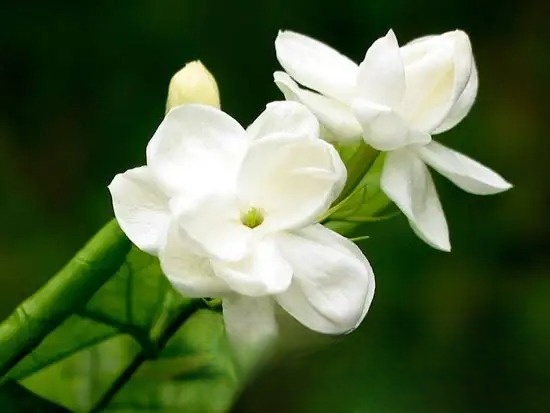
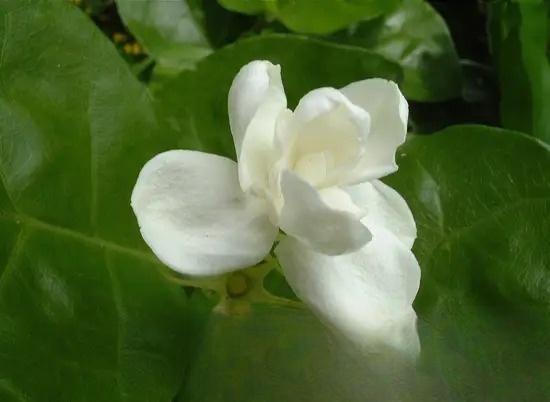
Tips for growing flowers:
For potted jasmine, loose, fertile and slightly acidic potting soil should be used. For example, 5 parts of leaf mold (or peat soil), 4 parts of garden soil and 1 part of cake fertilizer residue can be mixed together. When potting, put a little bone meal at the bottom of the pot as base fertilizer. It is best to change the pot once a year or every other year and replace it with new culture soil. After changing the pot, water it thoroughly and pay attention to loosening the soil. Keep the temperature between 22-24℃ to accelerate the germination of new buds.
Jasmine likes fertilizer. In addition to filling new culture soil (5 parts leaf mold, 4 parts sandy loam, 1 part cake fertilizer residue) when repotting every spring, apply decomposed thin liquid fertilizer every 7-10 days from the beginning of spring budding until mid-September. Apply more phosphorus fertilizer during the gestation period, and apply more phosphorus and potassium fertilizers after the cool autumn. Generally, fertilization should be stopped after late September. The soil should be loosened in time after each fertilization and watering to facilitate root development.
Watering is a key factor in the growth of potted jasmine. Jasmine is afraid of waterlogging. If the soil in the pot is too wet, it will easily cause root rot or even death. The amount of water for jasmine in four seasons is roughly as follows: in spring, the climate in the north is dry and windy, so you can water it thoroughly every 1-2 days; in summer, the temperature is high, the plant grows vigorously, and it needs more water. You can water it thoroughly once a day, spray water on the leaves 2-3 times, and sprinkle water on the ground around the flowerpot to increase the air humidity; the amount of watering in autumn is roughly the same as in spring; in winter, watering should be strictly controlled, generally just keep the soil in the pot slightly moist. If you water it a little more at this time, the roots will easily turn black and rot, and the leaves will turn yellow and fall off.
Jasmine can adapt to high temperatures, but cannot tolerate low temperatures, and has poor cold resistance. At 0℃, the leaves and tender parts of branches wither at best, and most branches wither and die at worst. The optimum temperature for jasmine growth is 25-35℃. Below 10℃, it grows very slowly or even stops growing. It can germinate at around 19℃, and flowers can only be produced above 25℃, and 32-37℃ is the most suitable temperature for the buds to mature and open.
Whether potted jasmine is grown indoors or outdoors, the cultivation site must ensure sufficient light. Jasmine is best suited for growth and development under direct sunlight. If there is insufficient light or an overly shady environment, the leaves of jasmine will become large and thin, and the leaf color will be light green.
(1) Jasmine leaf borer: It is one of the main pests of jasmine. Its larvae feed on the leaves, buds, twigs and new shoots of jasmine. The twigs wither and die after being eaten, and the seedlings die after being damaged, which seriously affects the growth and flowering of jasmine.
Prevention and control methods: ① In winter or early spring, remove dead branches on the plants and fallen leaves on the ground and burn them in a concentrated manner; ② Thin the leaves appropriately to facilitate ventilation, and manually capture and kill eggs, larvae, and pupae on the leaves; ③ During the growth period of jasmine, spray with 6000 times diluted 50% dichlorodiphenyltrichloroethane wettable powder, which has a good prevention and control effect.
(2) Vermilion spider mite: Also known as cotton spider , it can harm many flowers and greenhouse plants. Jasmine is one of the most common flowers that are harmed. The leaves of the affected flowers initially show small yellow-white spots, which gradually turn red and spread to the entire leaf, causing the leaves to curl, turn yellow and fall off. This mite develops very quickly and causes serious damage, affecting the growth and flowering of flowers and trees.
Prevention and control methods: Weed and clean the flowerbed in winter, and irrigate the nursery to eliminate the overwintering insect sources. During the period of red spider damage, 40% trichlorodicofol emulsion 1500-2000 times diluted (or 50% trichlorodicofol WP 1500-2000 times diluted, or 40% oxidizedSpray 1000-1500 times dimethoate emulsion for prevention and control, spray once every 7 days, spray 2-3 times, the effect is better. When spraying, spray the back of the leaves, and pay attention to spraying the inner branches and leaves in the middle and lower parts of the plants.
Jasmine flowers bloom most vigorously when it is 3-6 years old, and then it ages year by year and needs to be re-pruned in time. Before the budding of the Spring Festival, the branches of last year can be appropriately shortened, leaving 10-15 cm at the base, so that more strong new branches can grow; if the new branches grow very vigorously, they should be pinched when they grow to 10 cm to promote the growth of secondary shoots, so that more flowers can be bloomed, the plant shape is compact, and the ornamental value is high. It should be noted that pruning should be done on sunny days, and it can be combined with leaf thinning, diseased branches can be removed, and the plants can be adjusted to facilitate growth and bud formation and flowering.
Jasmine is mostly propagated by cuttings, layering, and division.
(1) Cutting method: It can be carried out from April to October. The survival rate of spring and summer cuttings is high, while the survival rate of autumn cuttings is lower. Cut mature one-year-old branches to 10-15 cm, with 3-4 nodes per ear, leaving 2 leaves at the top, removing the lower leaves, and inserting them obliquely into the sand bed, maintaining appropriate humidity. Cuttings in May will take root in about 35 days, and cuttings in July will take root in about 20 days, and the survival rate can reach more than 90%.
(2) Layering: This method is often used for family propagation. Select a longer branch, lightly cut it at 15 cm, preferably below the node, and bury it in a pot filled with sand and mud. It will take root after 2-3 weeks, and will be separated from the mother plant and become a seedling after 2 months. The seedlings propagated by this method can bloom in the same year.
(3) Division method: In spring each year, separate plants with dense branches and repot them separately. When dividing, appropriately prune the roots and above-ground branches and leaves.
Other names: Jade Spring Stick, White Crane Flower, White Hosta, Jade Bubble Flower
Origin: China
Type: Flowering Plant
Flowering Period: June-September.
Sunlight: Avoid strong sunlight. It is best to plant it in the shade of a building or under the shade of a big tree where the sun cannot shine directly.
Temperature: Strong and cold-resistant.
Soil: It is not selective in soil, but grows better in moist, fertile, well-drained sandy loam.
Water: Prefers shade and humidity.
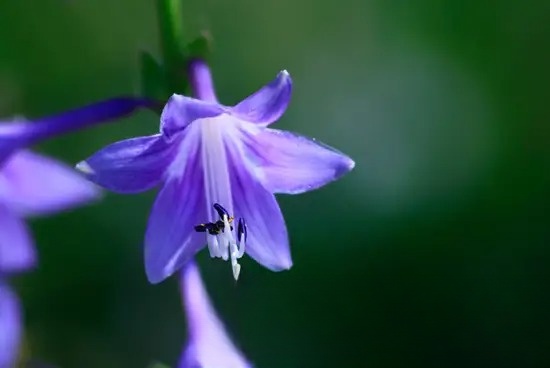
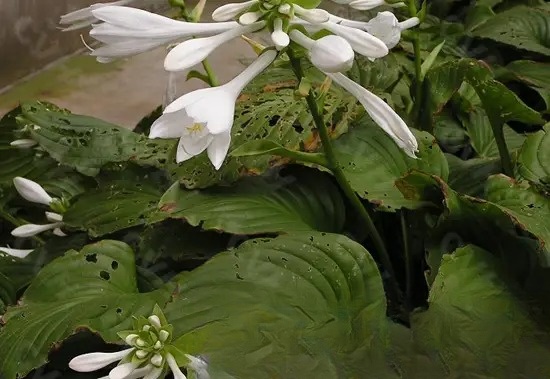
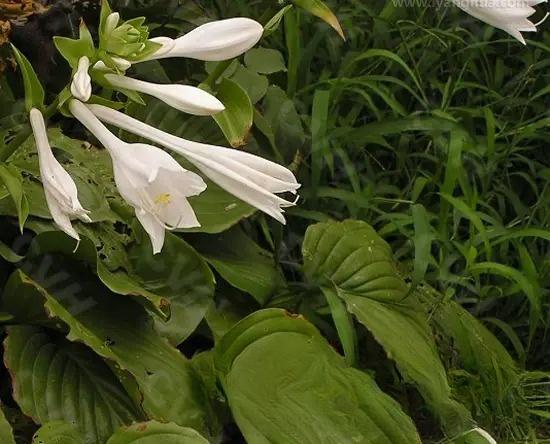
Fertilization should start from early May, and thin liquid fertilizer should be applied once a month. It can be slightly thicker in July and August, and stop fertilizing after late September. Water and loosen the soil in time after each fertilization to facilitate soil loosening and ventilation.
During the growth period, water and fertilizer management should be appropriate, and the soil should be kept moist at all times. If watering is excessive or fertilization is excessive, it is easy to cause root rot and yellowing of leaves. In summer, water supply should be sufficient. When the air is dry, spray water on the leaves every day to prevent the leaves from drying out.
Move it indoors at the end of November, and the room temperature should not freeze. Stop fertilizing after entering the room, and water it 1-2 times throughout the winter.
Hosta can be propagated by division or sowing. Division is generally used. Before germination in spring or before withering in autumn, the root clusters are dug out and separated, and then planted separately. Division in autumn is better, with 2-3 buds per cluster, which will not affect flowering in the second year. After the seeds mature in autumn, dry them and sow them in March-April of the second year. Seedlings need 2-3 years to bloom.
The main reasons for the scorched and yellow leaves of potted hostas are as follows:
(1) Too much light. Hosta leaves are large and thin, preferring a shady and humid environment and avoid direct sunlight. If the light is too strong, the leaves will turn yellow, and in severe cases, the edges of the leaves will burn.
(2) Dry air. Hosta has high requirements for environmental humidity. In a small environment such as a balcony, the air humidity is low and the leaf tips and edges are prone to scorching. Therefore, it is necessary to spray water frequently to increase humidity. It should not be placed alone, but can be placed under other flowers.
(3) Improper water and fertilizer. Although Hosta likes moisture, if you water it too much and the soil does not drain well, it will affect the respiration of the root system, causing the fleshy roots to rot, and then the leaves to wither and turn yellow. If the fertilizer is too concentrated or raw fertilizer is used, it will also cause the leaves to turn yellow.
Origin: North America, mainly cultivated in the area north of the Yangtze River
Type: Flowering plant
Flowering period: July-September
Sunlight: Prefers a sunny, dry and well-ventilated environment.
Temperature: Cold-resistant.
Soil: Requires loose, fertile, humus-rich, well-drained soil.
Water: Tolerant to early.
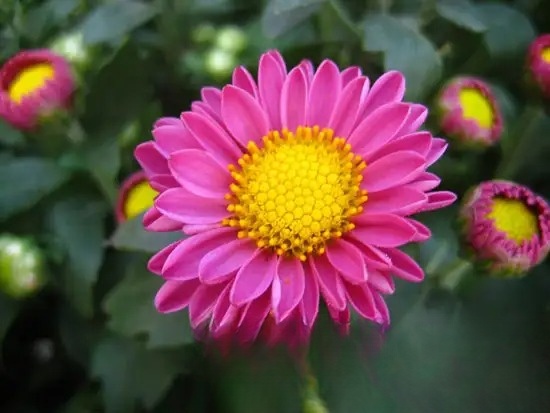
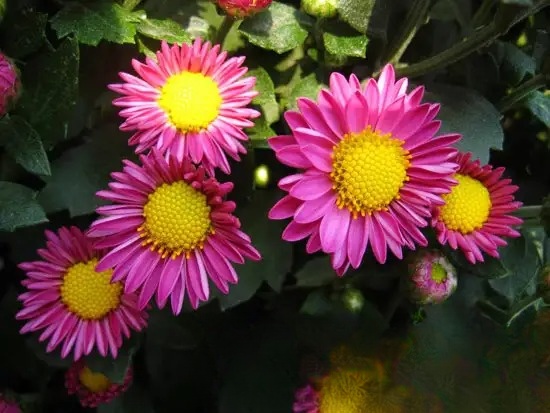
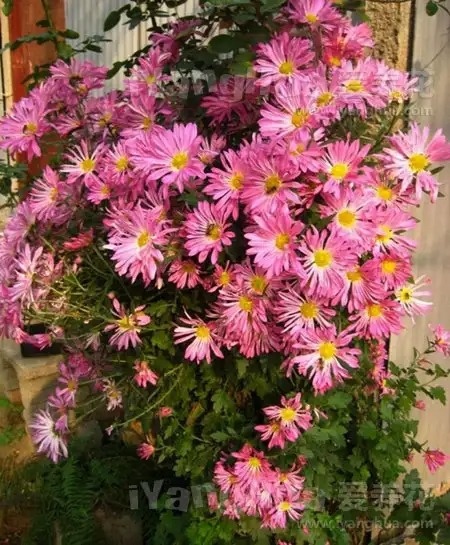
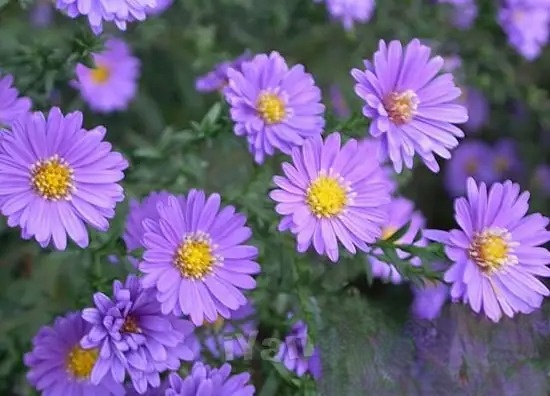
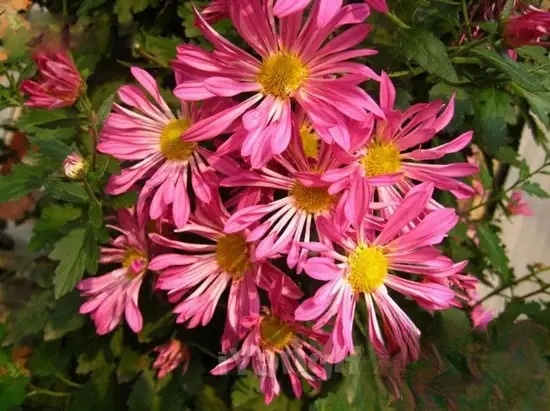
Tips for growing flowers:
After the Dutch chrysanthemum seedlings are planted in the open field, they need to be properly fertilized, watered, weeded, and pinched. Apply fertilizer 2-3 times before flowering, and pinch appropriately during the growth period according to the requirements of the flowering period. Generally, flowers will appear again 20 days after pinching. After pinching, the plants grow luxuriantly and the flowers are bright. According to the requirements of the flowering period, forced cultivation can also be carried out. That is, the daytime temperature should not exceed 25℃ during the growth period, and the night temperature should be controlled above 5℃. If the temperature is too high or the temperature difference between day and night is too large, it will not bloom.
When cultivating Dutch chrysanthemum, it is important to pay attention to timely pruning, which is the key to controlling the flowering period. Due to the characteristics of Dutch chrysanthemum that it is resistant to pruning and has many branches, it can be pruned four times during its growth period. The first pruning is in early June, and the second pruning is in early July. These two prunings can cut off the tops of all branches, promote the germination of axillary buds, and form more branches. The third and fourth prunings are at the end of July and late August respectively. The main purpose of these two prunings is to trim the shape of the plant so that its branches and leaves grow evenly and balanced, so as to keep the plant plump and lush. After such pruning, the peak flowering period is just during the National Day. If it is required to bloom on May Day, it can be cut in September of the previous year, or the old roots can be dug out in late autumn and potted, and cultivated indoors at low temperatures in winter, and it can bloom as scheduled.
Dutch chrysanthemum can be propagated by sowing, cuttings, and division. In late March, seedlings are sown in pots or hotbeds in a greenhouse. At 15-22℃, they can germinate in about 1 week. When the seedlings grow to 3-4 cm high, thin them once, and transplant them with a row spacing of 8 cm × 8 cm when they are 6-8 cm high. Plant them in the open field in mid-to-late April, with a row spacing of 30-50 cm. If they are potted, plant 3-5 plants per pot. Cutting propagation is mostly carried out between May and June. Cut the young branches and cut them on the sand bed. They can be transplanted after rooting for 2 weeks. Cuttings can also be taken in September, and they can bloom on May 1st of the second year. Cuttings in July and August can provide seedlings for the flower beds for the National Day. For division propagation, take the suckers that occur at the rhizosphere of the old self-rooted plants in autumn or spring and plant them separately, with about 3 buds per cluster. After a period of cultivation, it can be transplanted. Generally, varieties can be divided once every other year.